Topkapi Palace – An Istanbul Wonder
This is my 32nd and final post from our fall 2021 trip to western Turkey with Adventures Abroad. The fact that I could write this much about an 18 day trip tells you just how many interesting places are included on this itinerary. In the last post we visited the Museum of Anatolian Civilizations in Ankara which covered thousands of years of Anatolian history and archaeology. In this post we will visit Istanbul’s legendary Topkapi Palace, seat of the Ottoman Empire from just after the conquest of Constantinople to the mid 1800’s. If there was any place more connected with the phrase ‘palace intrigue’ I’ve yet to hear of it. So please join our group on our final day as we tour a place renowned not only for its riches, but also for the deeds and misdeeds of its famous inhabitants.
History of Topkapi Palace
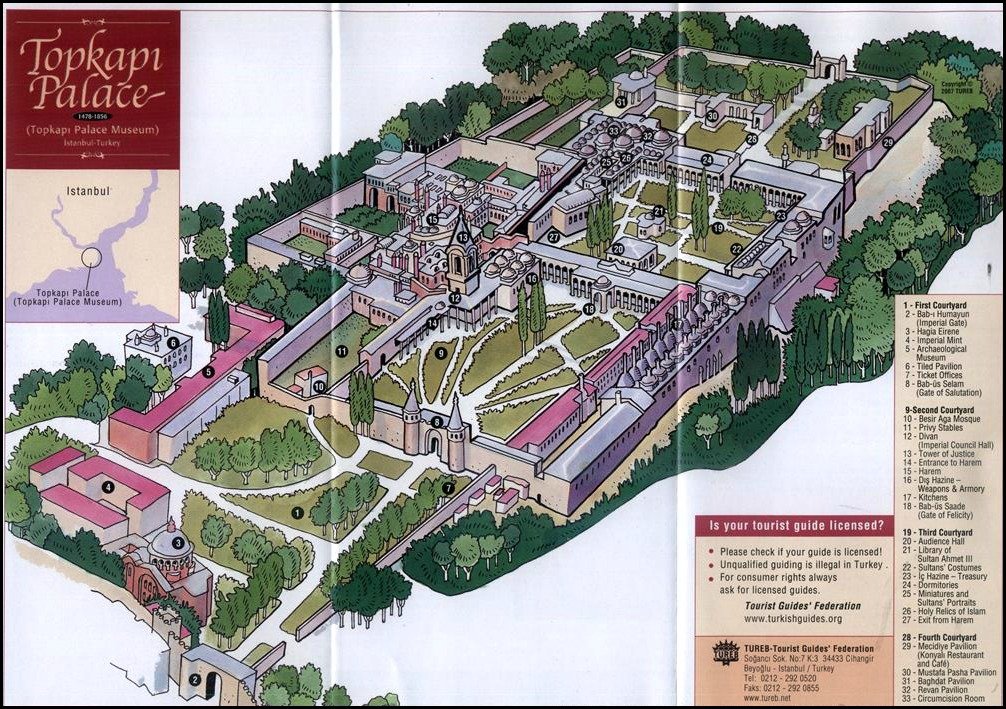
This is a map of Topkapi Palace as it looks today with 33 points of interest contained within four separate courtyards. It doesn’t take a genius to figure out that it was not all built at the same time like many palaces, but evolved to its current state over many centuries.
Topkapi Palace has a commanding position atop a promontory that divides the Bosphorus from the Sea of Marmara. Well over 2,000 years before its construction began it was the acropolis of the Greek city of Byzantium. Somewhat counter intuitively the Byzantines, after the fall of the western Roman Empire did not use this location as their headquarters, but rather maintained it in area where Istanbul University now stands. It was this ‘Old Palace’ that Mehmed II moved into after conquering Constantinople in 1453. However, he wanted a grand palace of his own making and by 1459 work was begun on the ‘New Palace’ as it was then called. This initial palace was greatly expanded by Sultan Suleiman in the mid 1500’s to reflect his sobriquet. By the time he was finished both his name and his complex were ‘Magnificent’. The final touches were added in the late 1500’s by the greatest architect of his age, Mimar Sinan, and very little has changed since then.
Strangely enough it was not given the name Topkapi which means ‘cannon gate’ until the 19th century by which time the sultans had decamped for the more modern Dolmabahçe Palace. After the demise of the Ottoman Empire following WWI it was made into a museum although only a fraction of the hundreds of rooms are open to the public. The most visited sites are the infamous harem or seraglio, the treasury and the depository of religious relics. It is also one of the designated UNESCO World Heritage Sites that make up the Historic Areas of Istanbul.
So with that short introduction let’s visit Topkapi Palace. The smartest way to visit is by purchasing a 5 day Istanbul Museums pass which covers all the major museums in the city. It costs 700 Turkish Lira or about $37.00USD and can be ordered online vis this link.
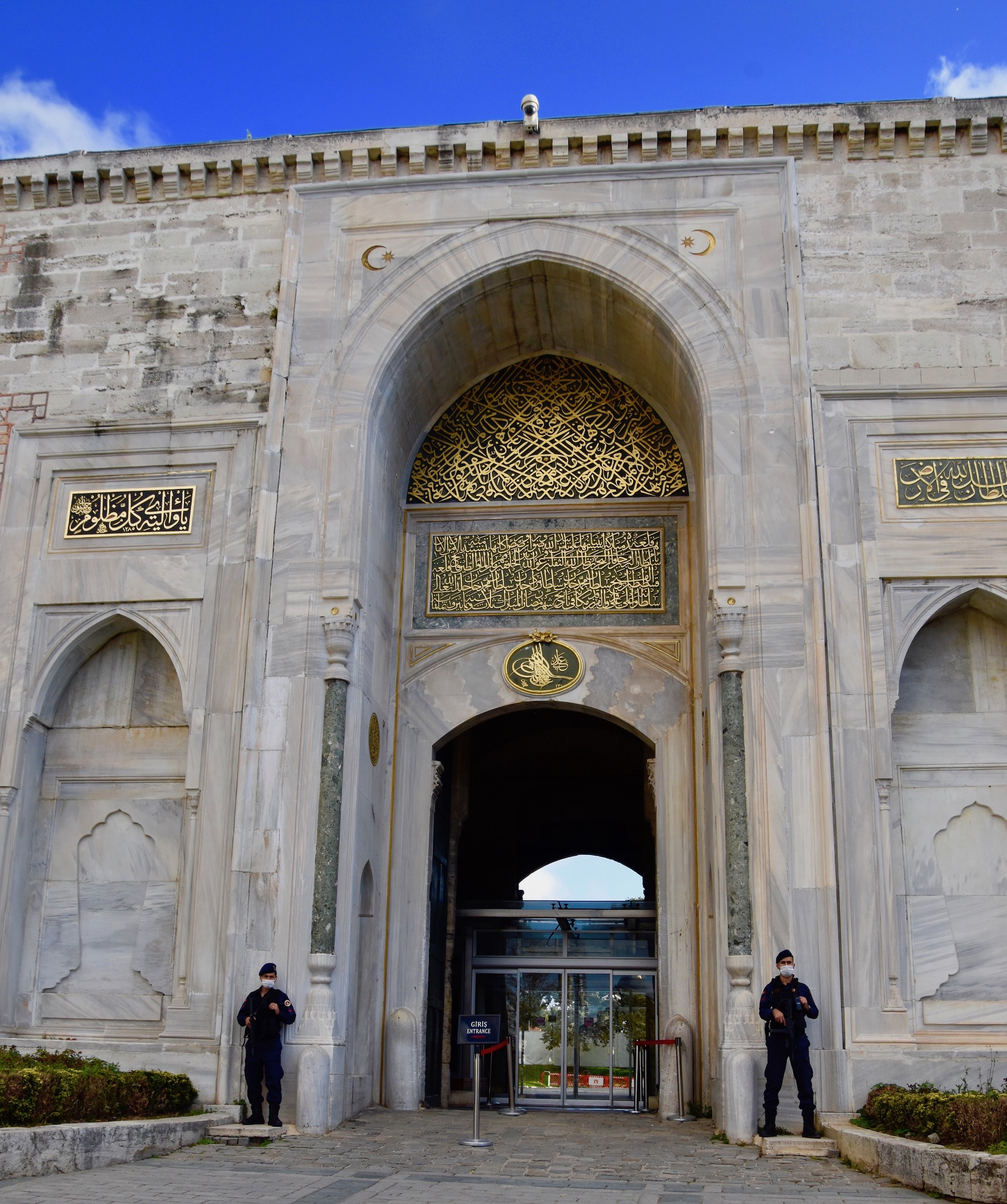
This the Imperial Gate, the only way into the Topkapi Palace grounds with two machine gun wielding soldiers guarding it. The guy on the right must have been seven feet tall. The entire complex is still surrounded by high thick walls and turrets that were designed to seal off the Sultan, his harem and his advisors from the outside world. The very idea that an ordinary member of the public would be allowed to transgress within its walls was preposterous.
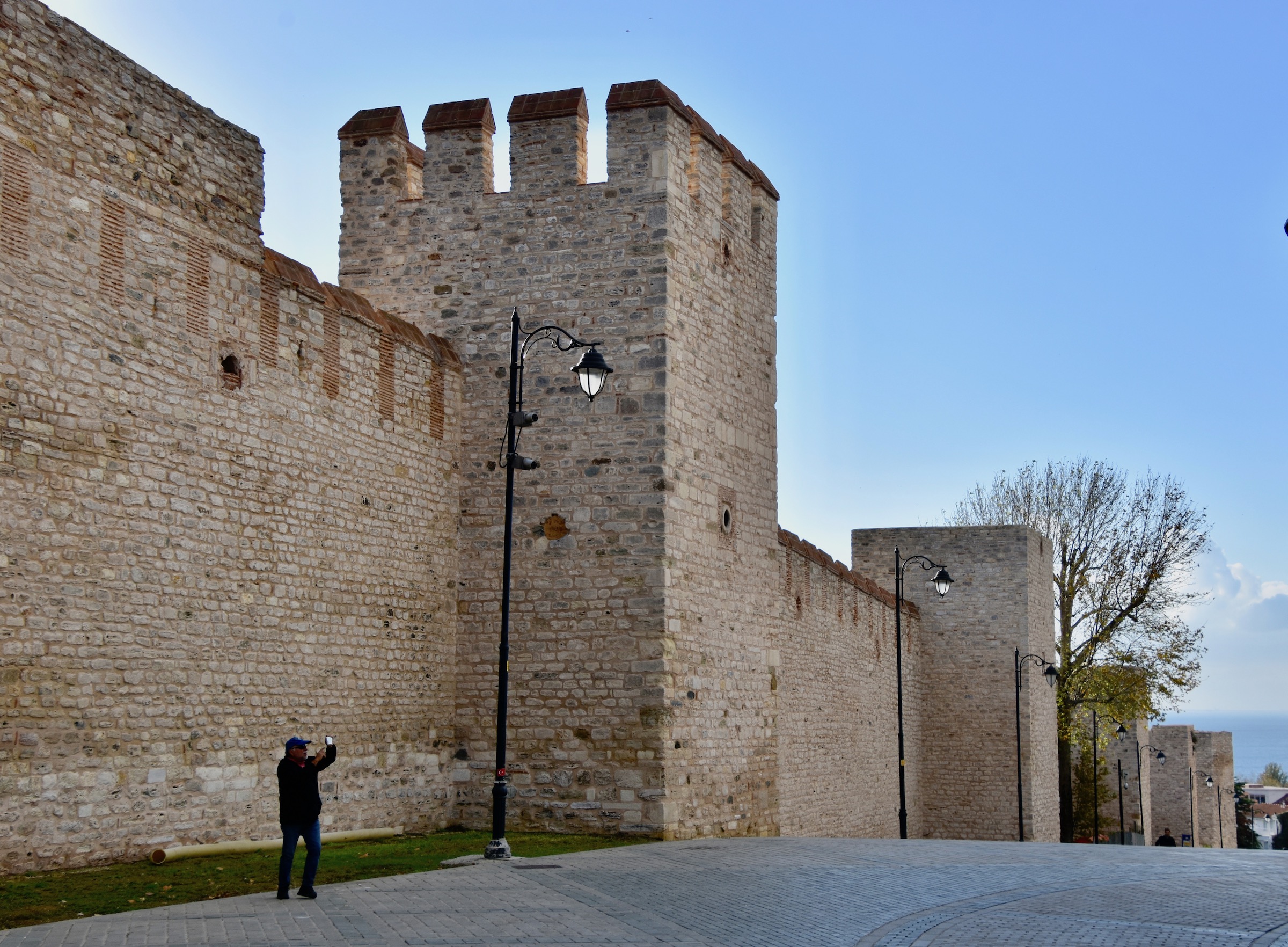
Yet here we are, along with our guide Yasemin Reis inside the grounds of Topkapi Palace. At least we have penetrated the first of the four distinct areas that make up the complex. We’ll see how far we get in breaching the others.
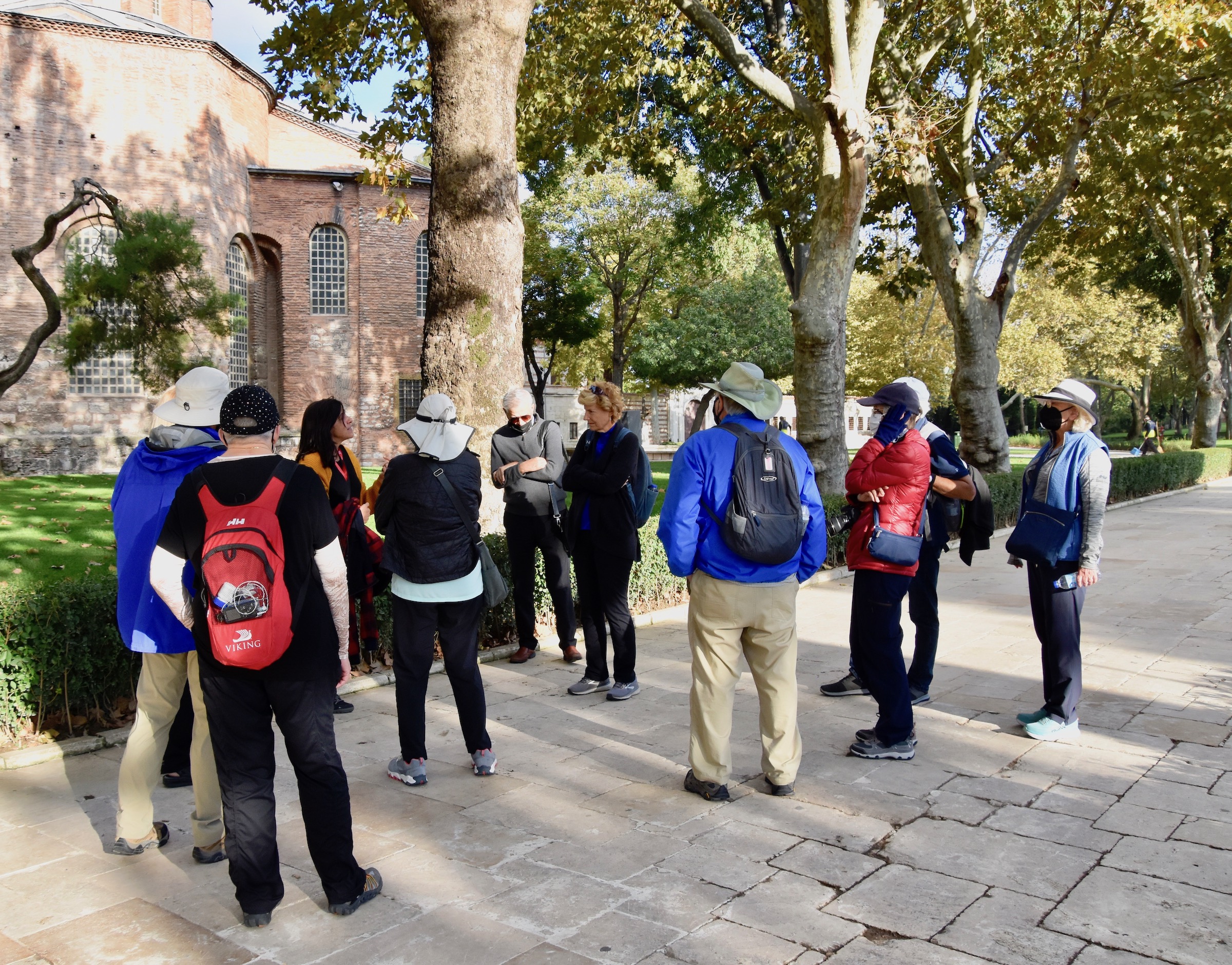
The first courtyard is essentially a park that is quiet and shaded with surprisingly few other visitors. We arrived just after opening hours so I expect it will get progressively more busy as the day moves on and that proves to be the case.
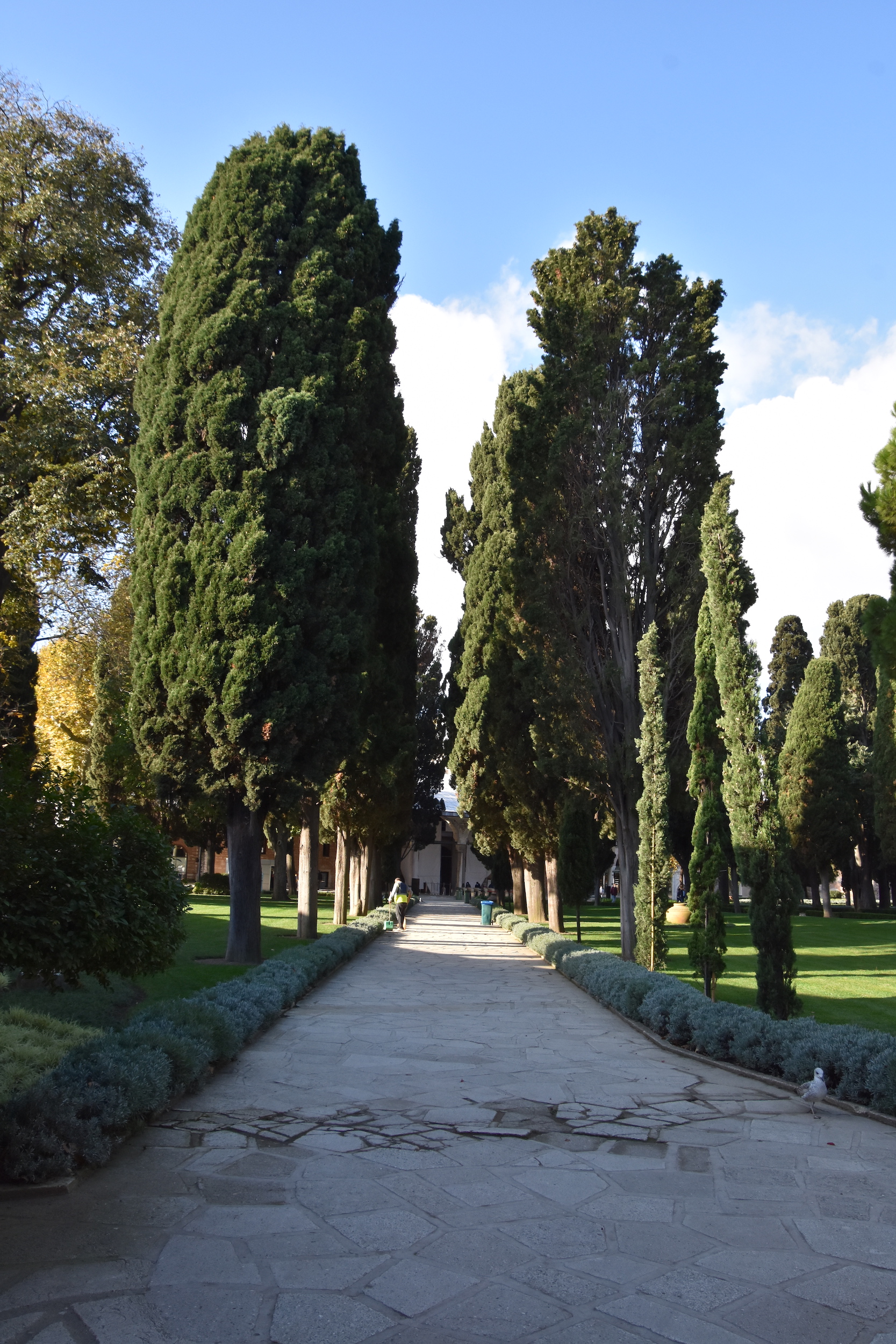
The first building of note in the Topkapi Palace is a bit of a surprise because it’s a church and not a mosque. Also, it’s almost a thousand years older than anything else inside the walls. This is Hagia Irene which was built by the Emperor Justinian after the first church here built by Constantine was burned down during the Nika riots of 532. After the conquest of Constantinople by the Turks it was used as a storehouse and arsenal until the 19th century when it became the first museum in the Ottoman Empire. Since my last visit it has been reopened as a separate museum within the Topkapi complex.
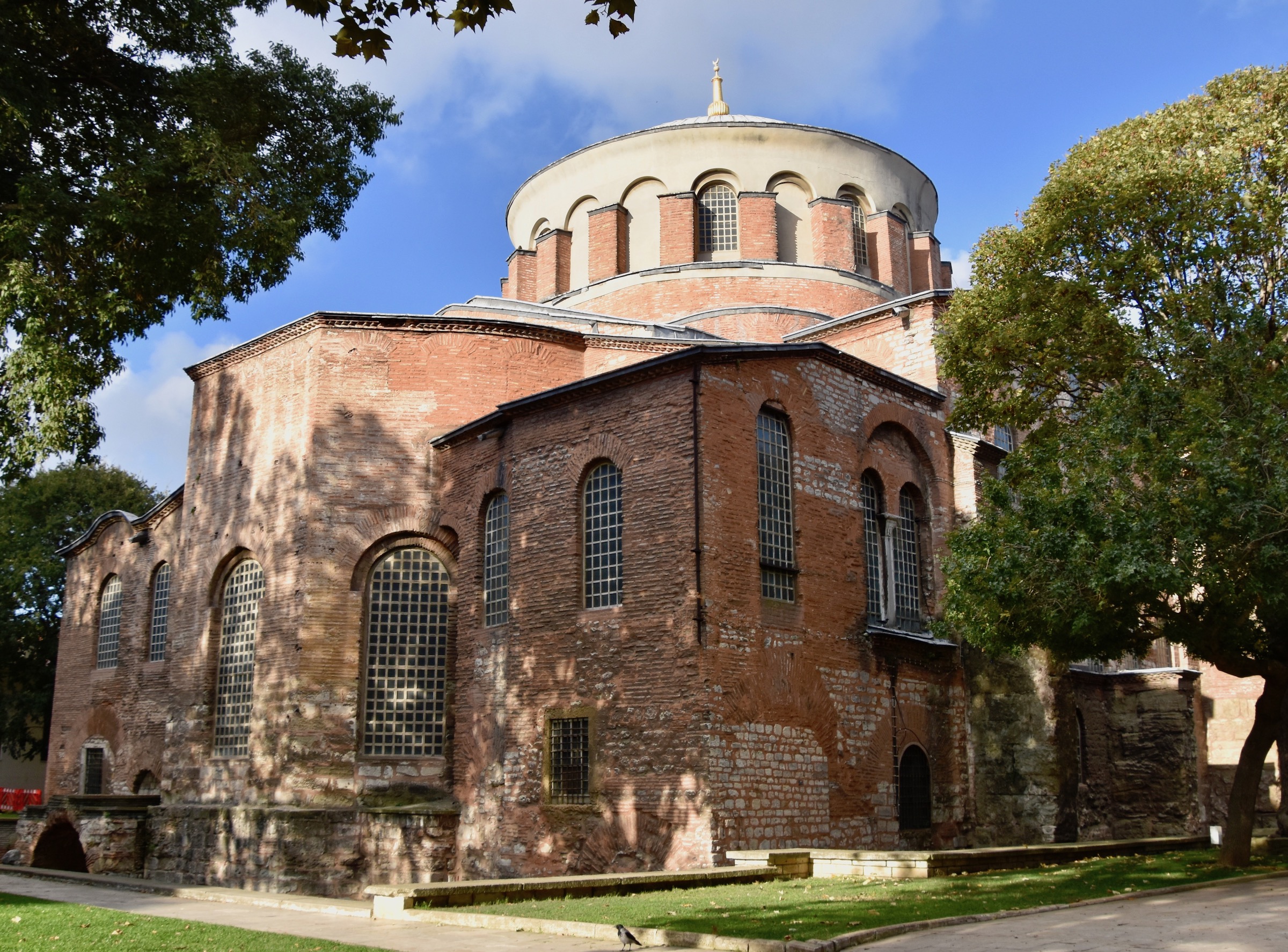
Also inside the first courtyard is the Imperial Mint which was a very late addition to the Topkapi complex dating only from 1727. Yasemin points it out as we head toward the entrance to the second courtyard.
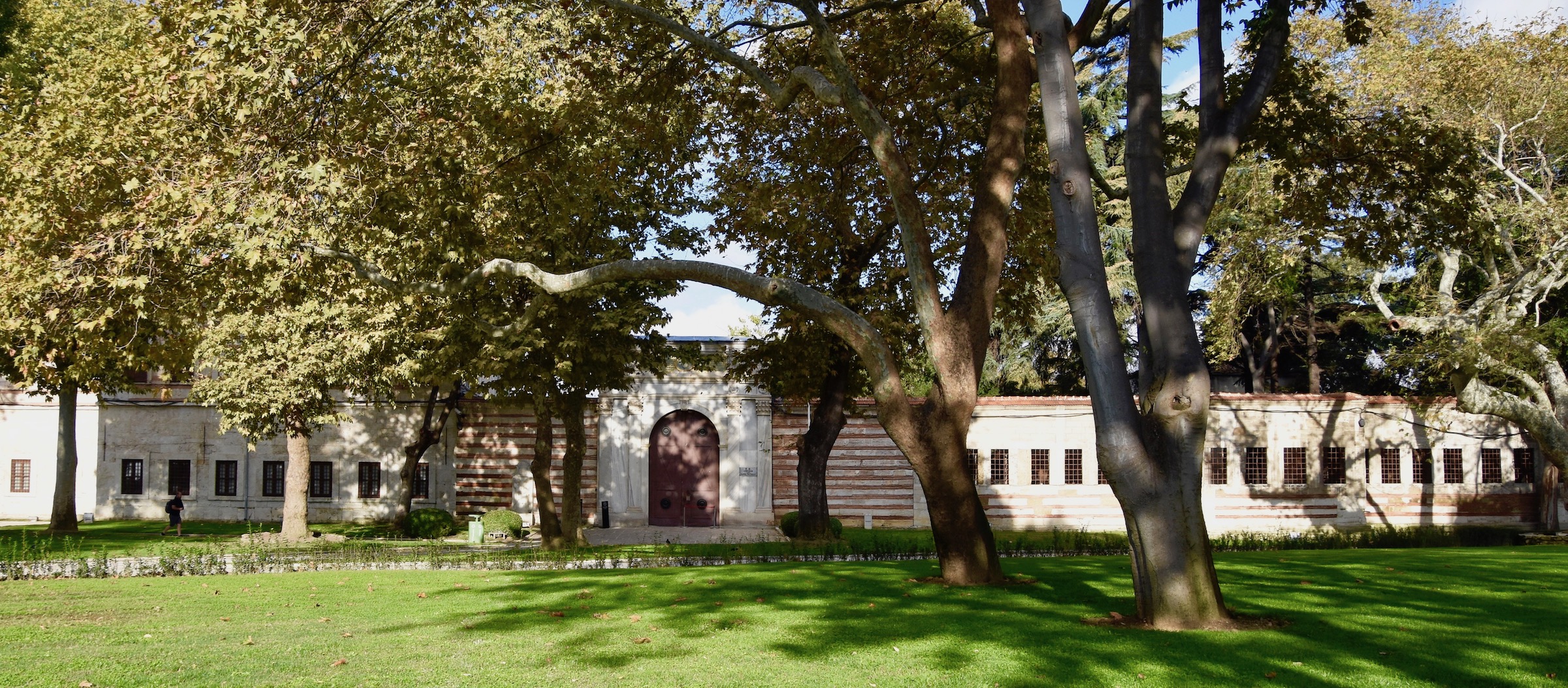
This is the Gate of Salutation leading to the second courtyard.
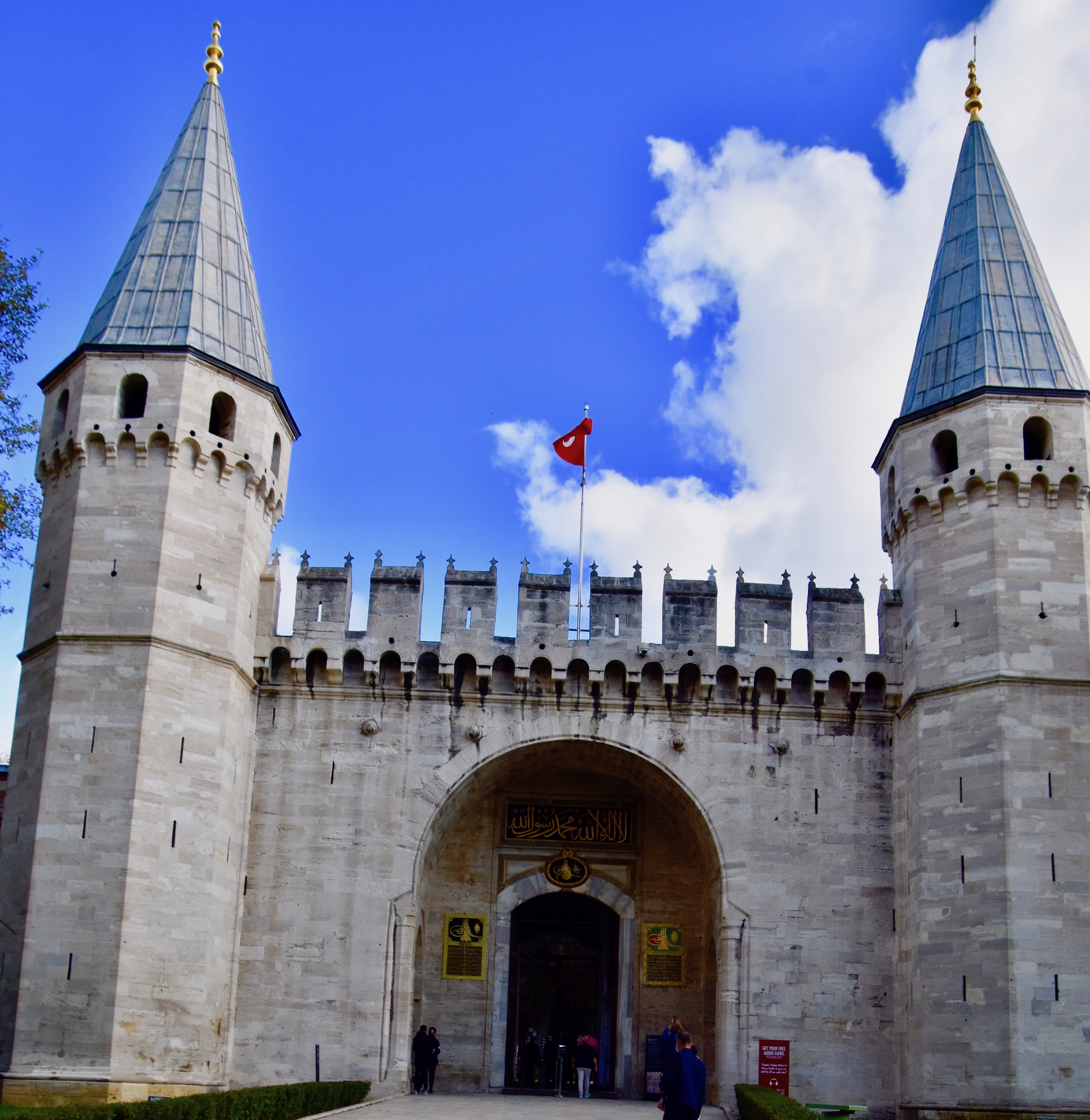
As you pass through it you can look up and see the tughra or calligraphic symbol of Mehmed II, the conqueror of Constantinople overhead. How’d you like to have to sign your name that way?
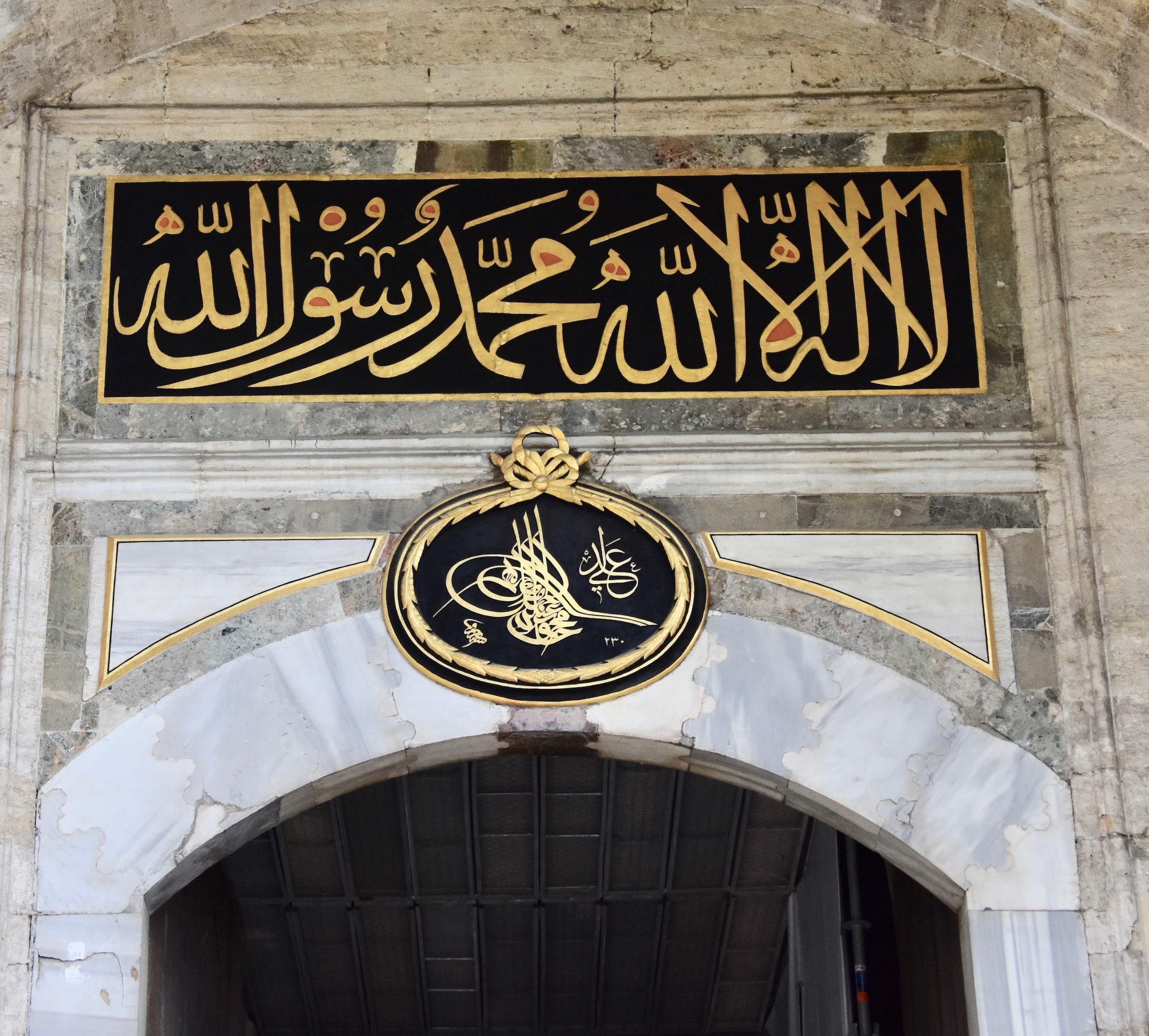
Inside the second courtyard is this marvellous model of the Topkapi Palace which gives you an idea of just how large an area the entire complex covered.
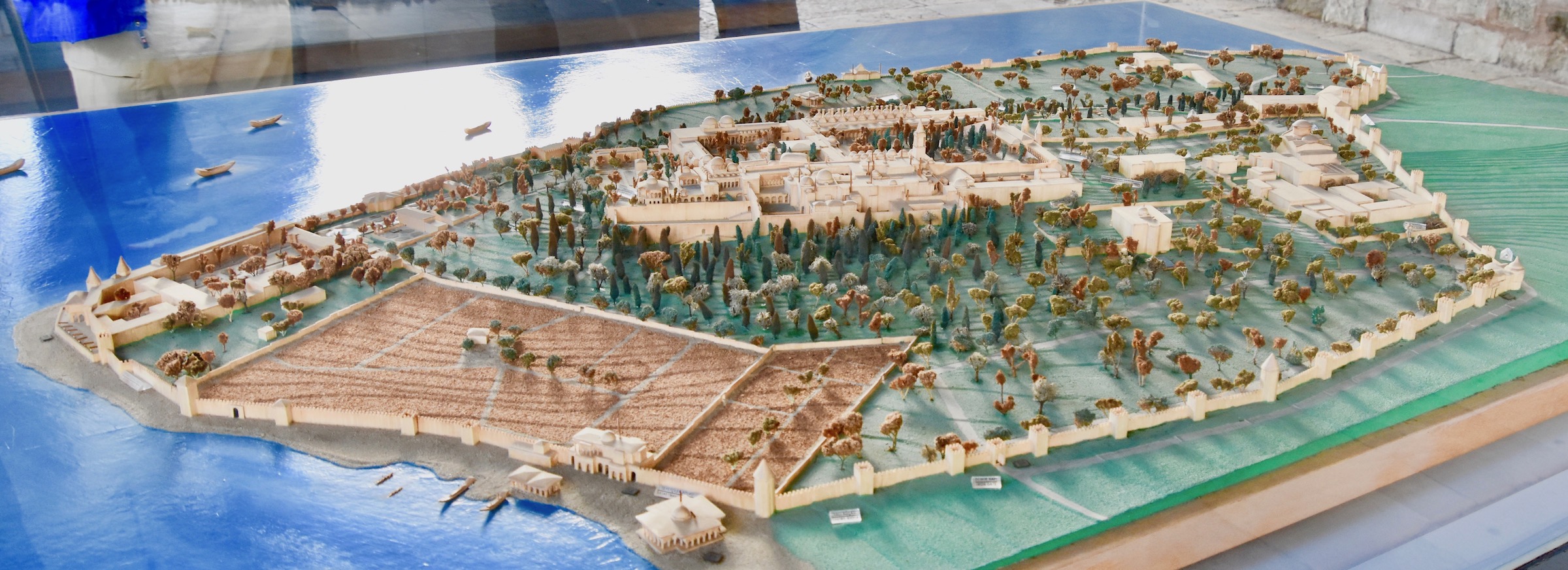
There is a more detailed model of everything inside the second courtyard which is another completely walled in area which is where the Topkapi Palace really begins. You might get through the first gate, but you would have to be someone really important to get through this second one.
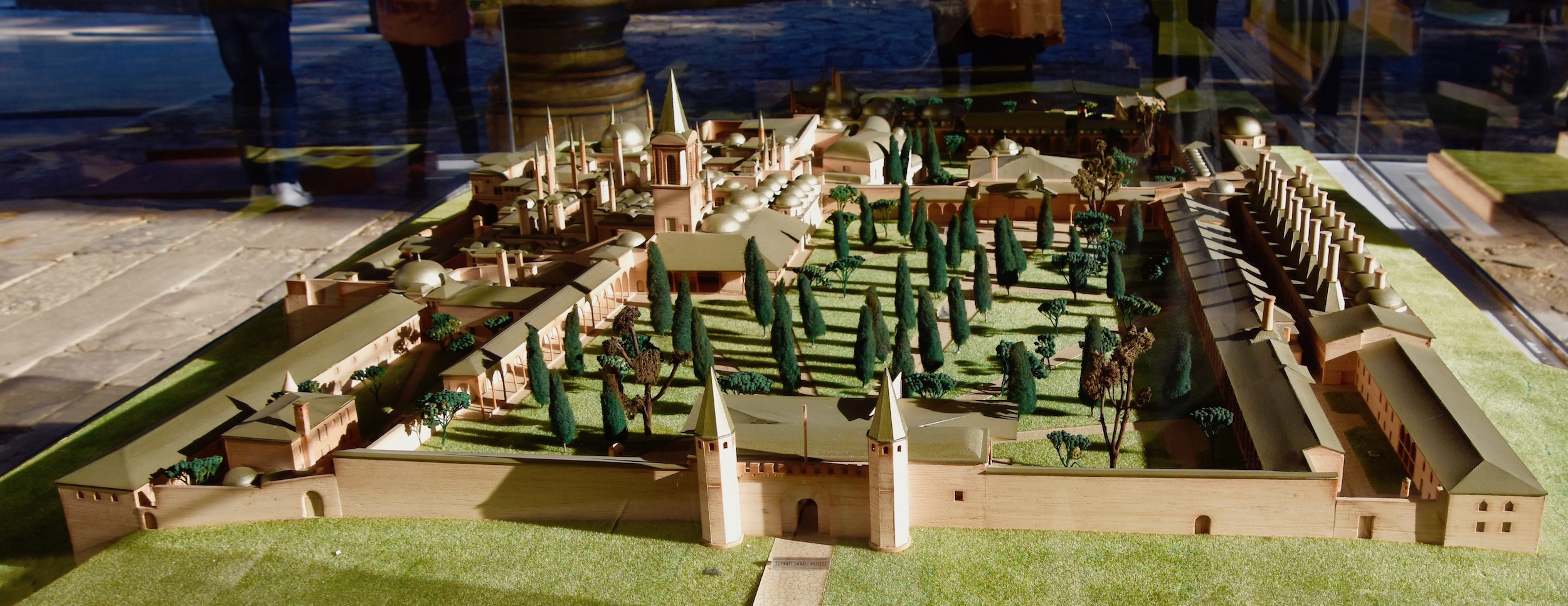
The first buildings you can actually go inside are the massive kitchens that run all down the right side of the second courtyard. You can see the many chimneys in the model.
This is a colonnade along the side of the building fronting the kitchens.
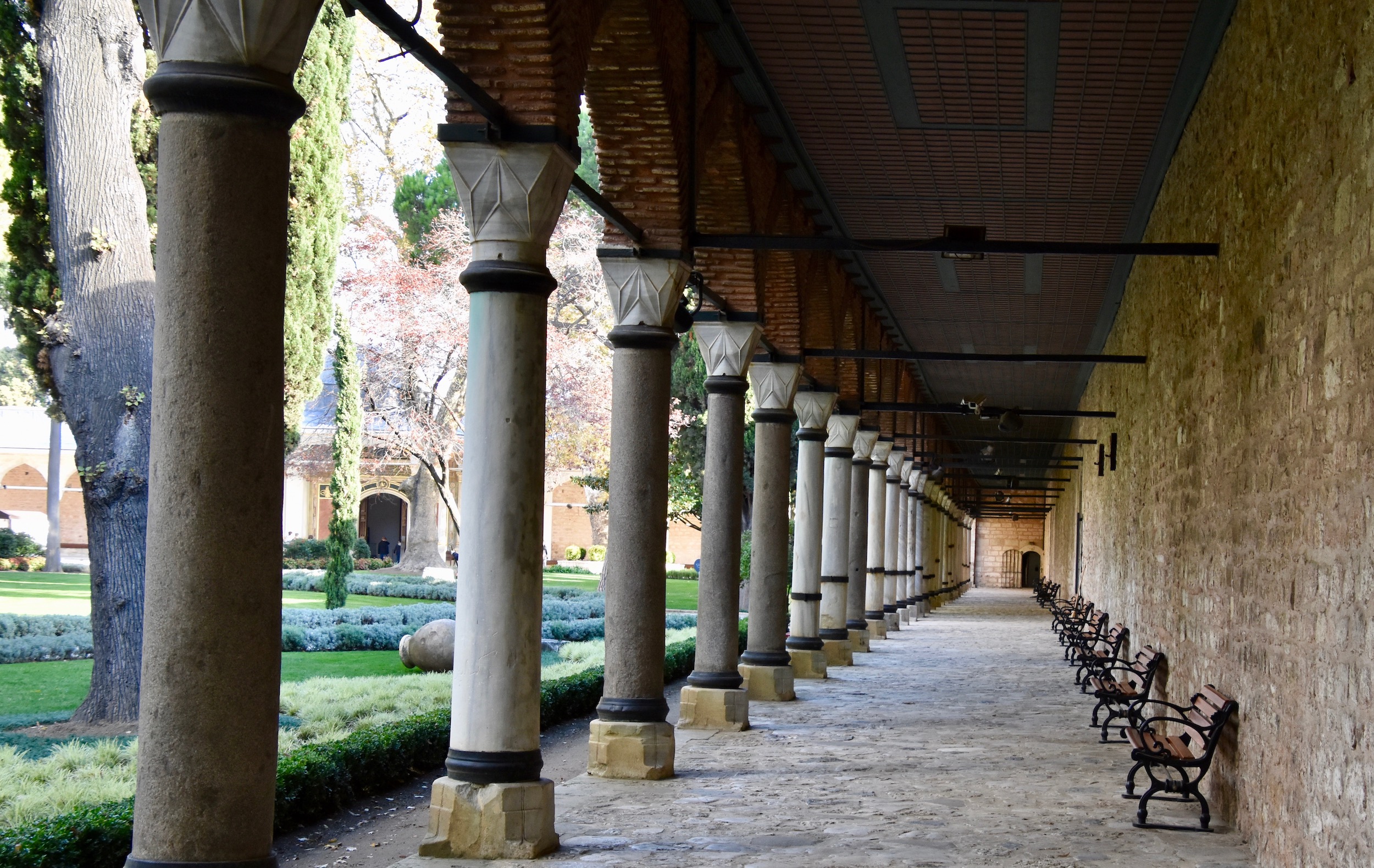
The actual kitchens are behind this building which I presume was designed to block off the sights and odors that my be offensive to the Sultan. The kitchens were the largest in the Ottoman Empire, preparing meals for over 4,000 people including the 800 who worked in these kitchens.
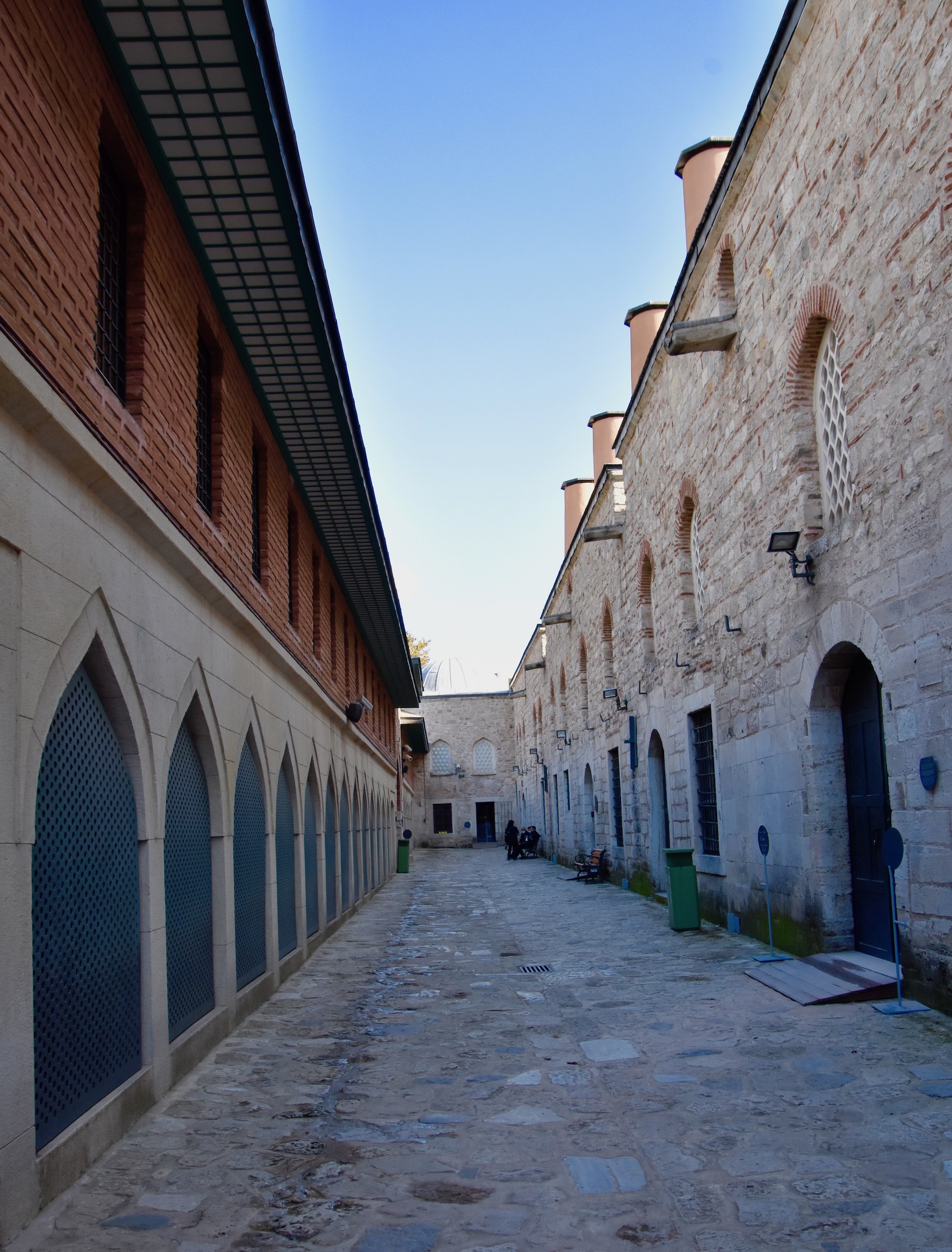
Today the kitchens house one of the largest and best collections of Oriental porcelain in the world, over 11,000 pieces all told. Unfortunately the lighting conditions were such that it was very difficult to film them properly. This photo from China News gives some idea of what you might see inside the kitchens.
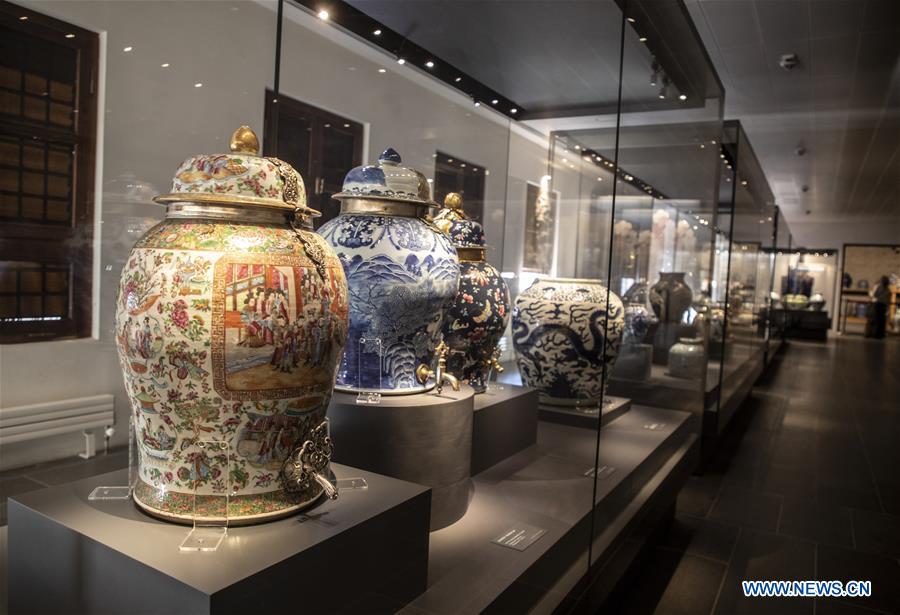
After exiting the kitchens we walked the short distance to The Gate of Felicity. Inside here were the Sultan’s personal quarters and you had to have his specific permission to enter through it.
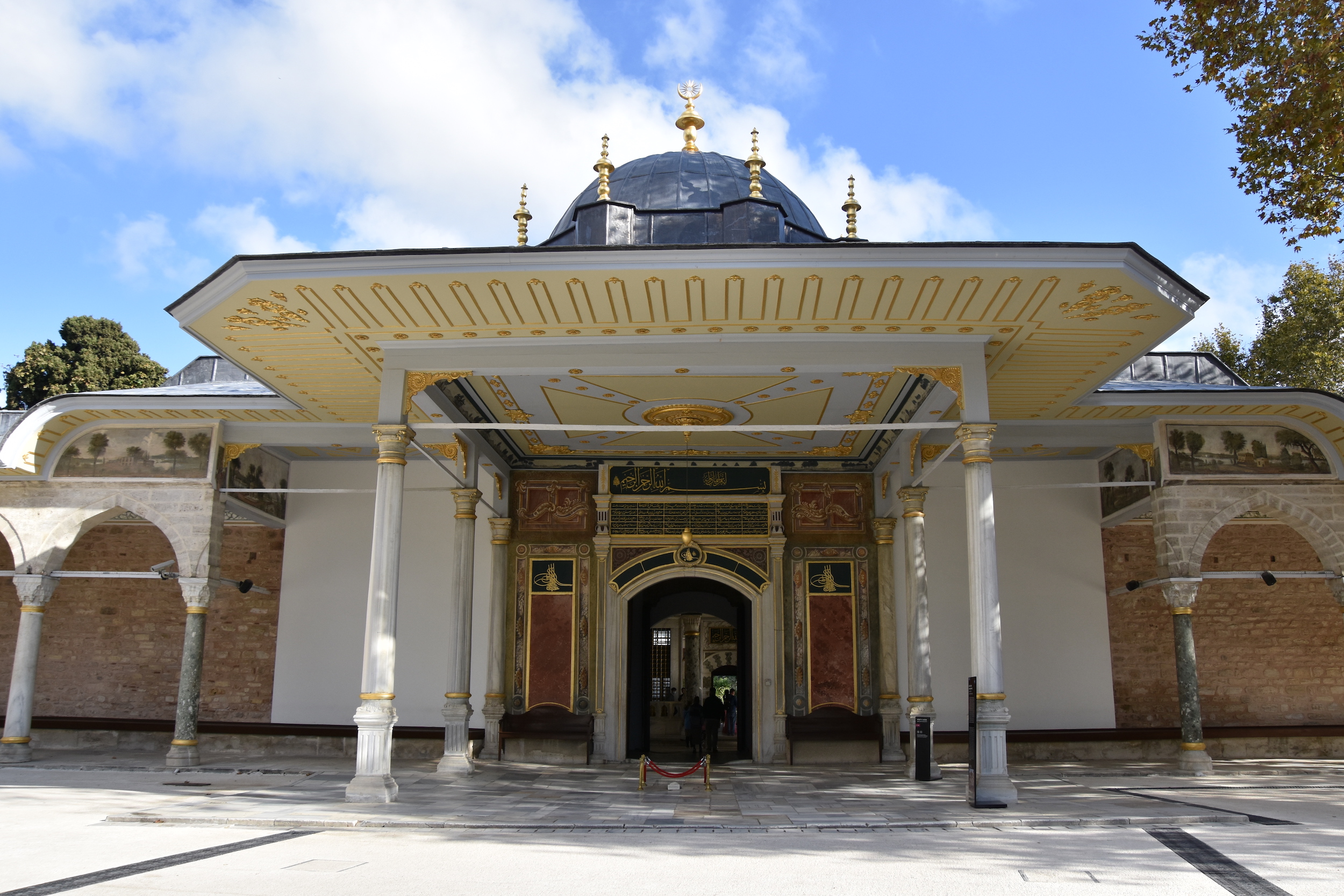
Fortunately Yasemin has some pull and we are allowed through passing by the spot where the Sancak-i Serif once stood. This was the original standard of the Prophet Mohammed which he and every subsequent Muslim leader took into battle. You can see the small roped of area just in front of the entrance.
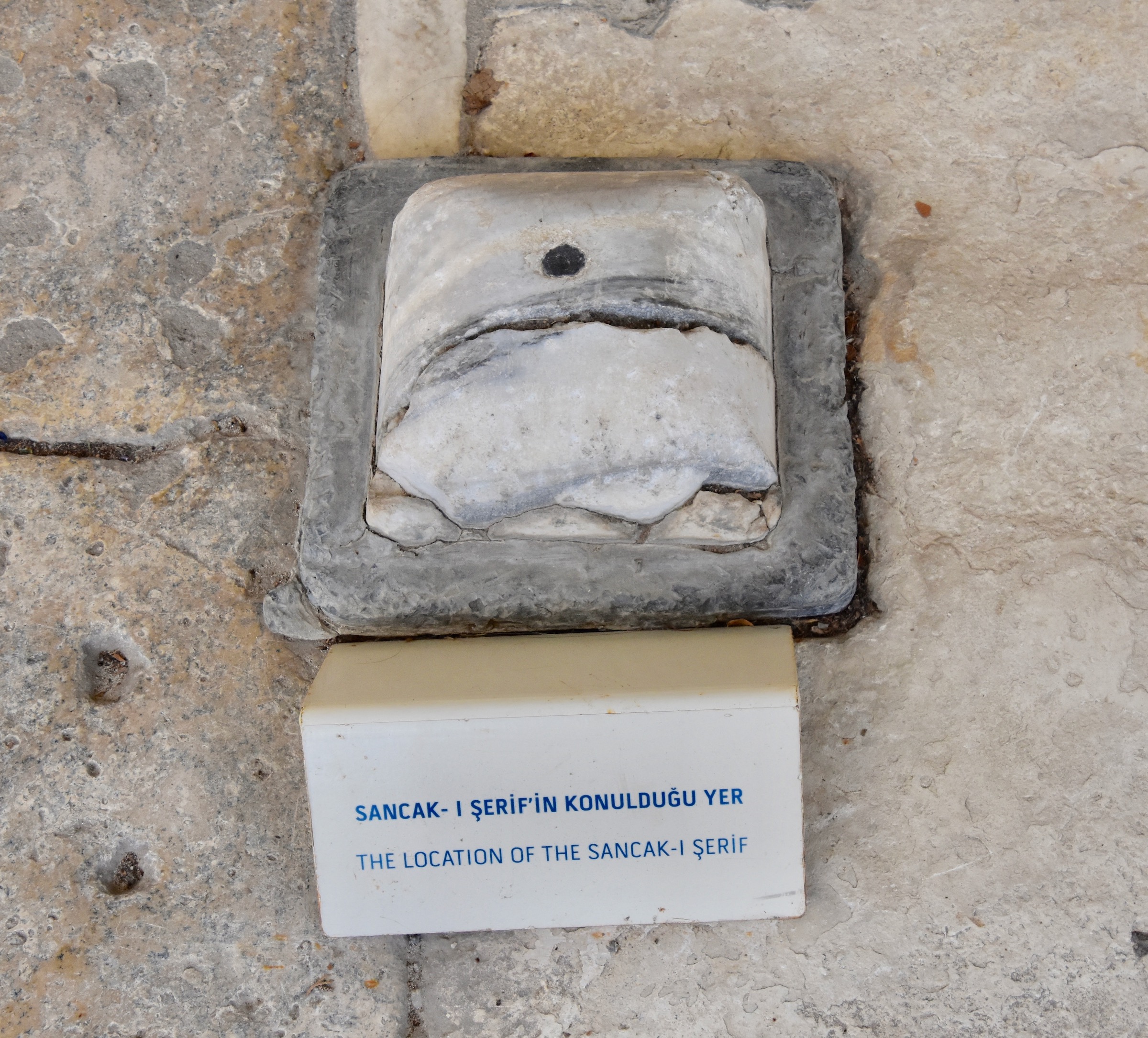
We are now inside the Sultan’s residence and are greeted by this stately figure who is the Babussaade Agasi, a white eunuch who was the gatekeeper to the Sultan’s residence. Apparently we pass muster and are allowed to proceed inside.
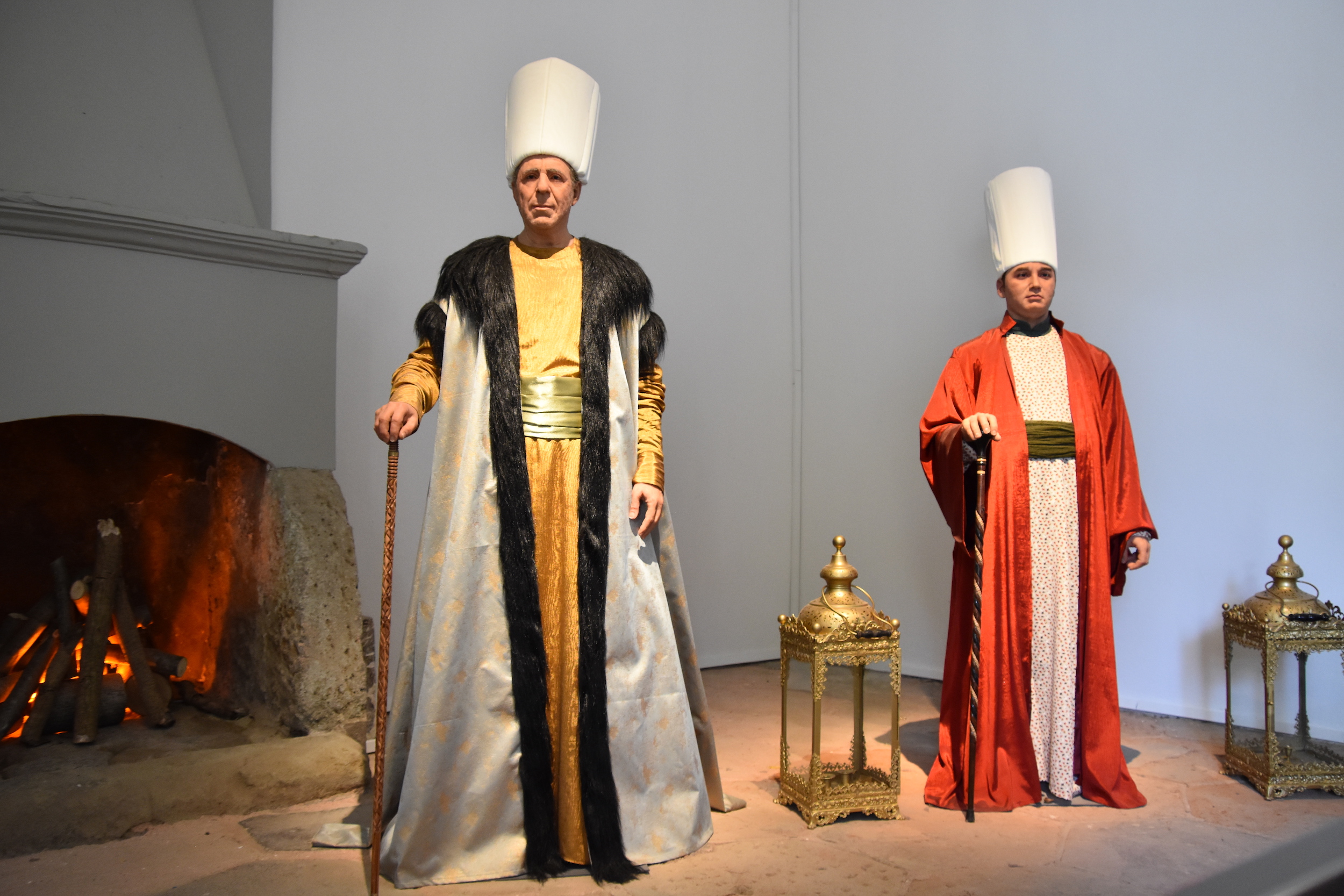
This beautiful building is the audience chamber where, if you were very fortunate you might get a chance to pay obeisance to the Sultan.
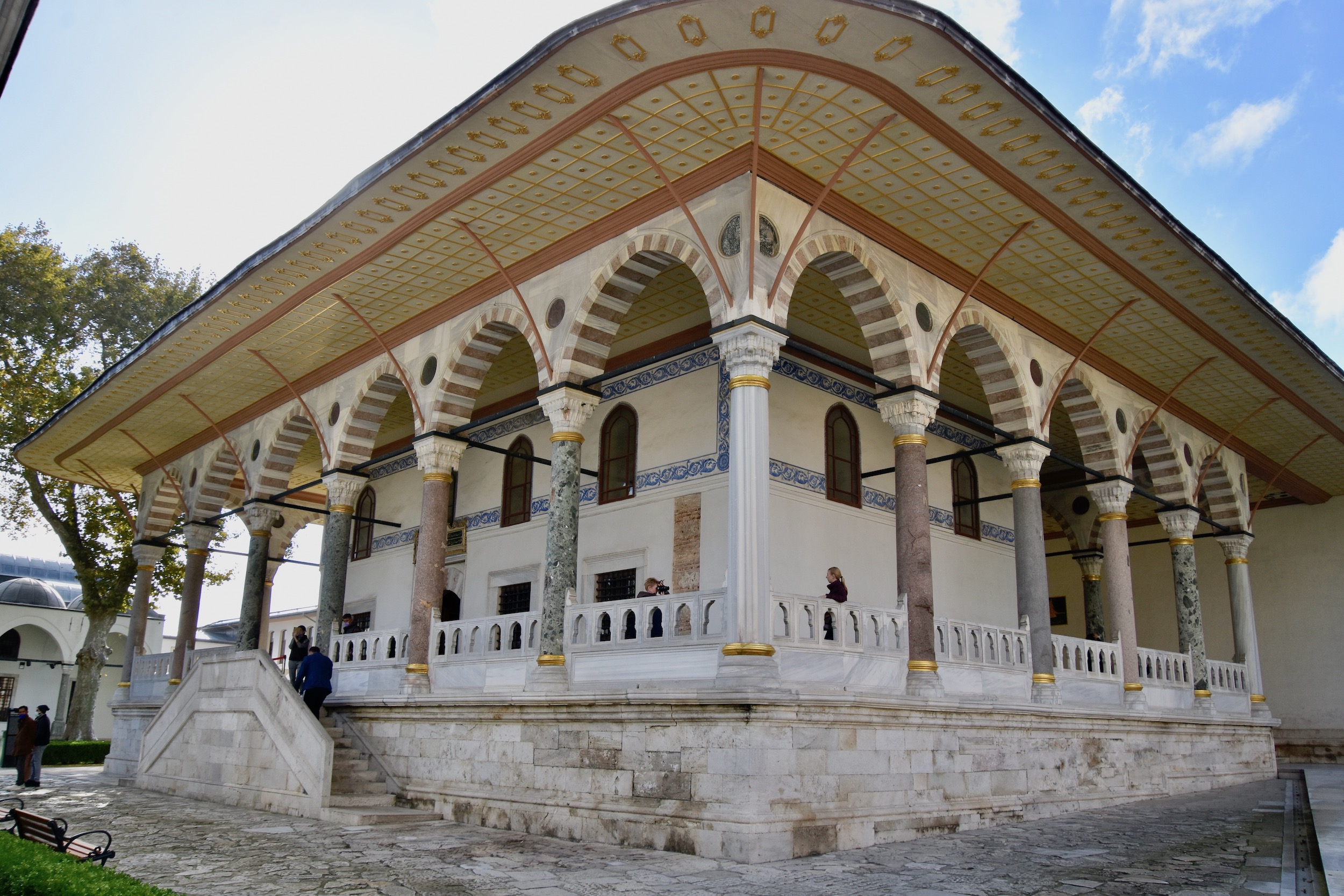
This is the entrance to the audience chamber with Mehmed II’s mughra on both sides. You would need to perform ablutions at the fountain on the right before entering, but that has been waived for today.
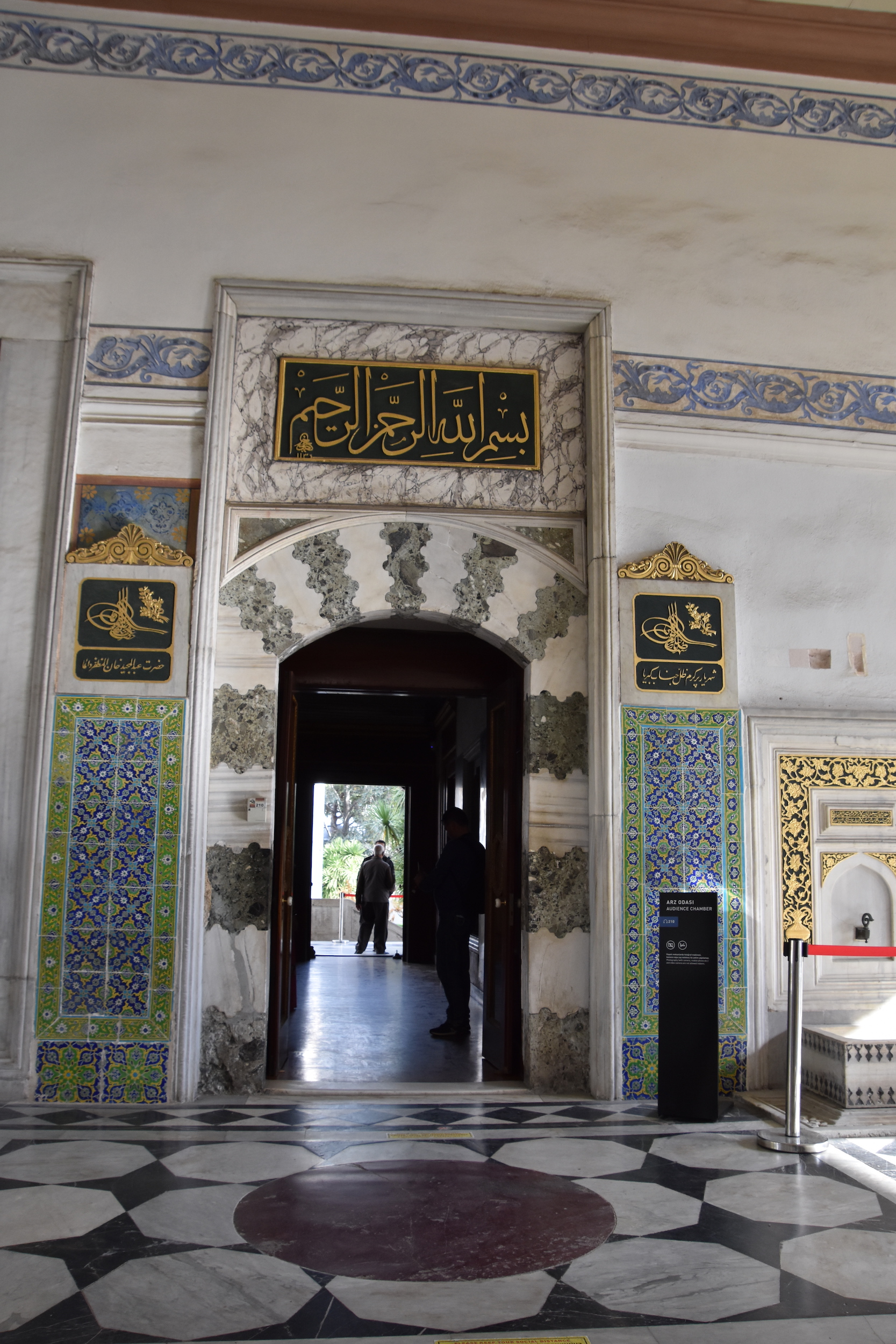
And this is the throne of gold embossed with precious gems upon which many sultans over centuries gave audience to foreign ambassadors and other dignitaries. It’s really hard to get your head to grasp just how many important events were determined from just this spot.
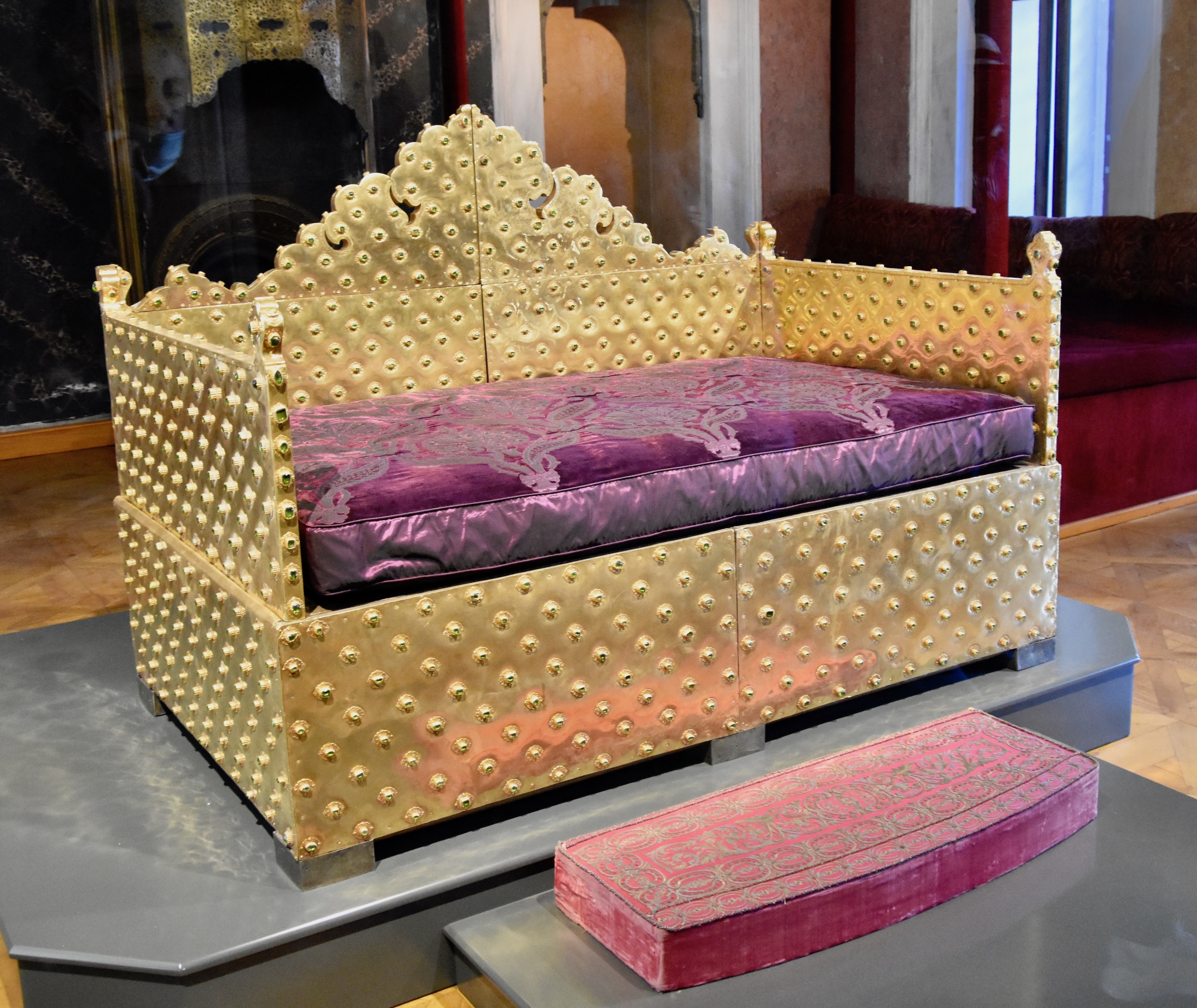
We now come to one of the most revered places in all of Islam, the Privy Chamber that now houses some of the most sacred relics of the Muslim faith. These include a number of items that once belonged to the Prophet including a cloak, a bow, a tooth, swords, a signed letter and other relics collectively known as the Sacred Trusts. In addition there are relics purported to be from Moses (his staff), Abraham (a pot), Joseph (a turban) and other Biblical figures including John the Baptist. At one time these were considered so holy that even the Sultan was only allowed to visit them one day a year. Now anyone can view them and make your own decisions on their authenticity. Needles to say, no photography is permitted. For the faithful this would be the most important room in the Topkapi Palace.
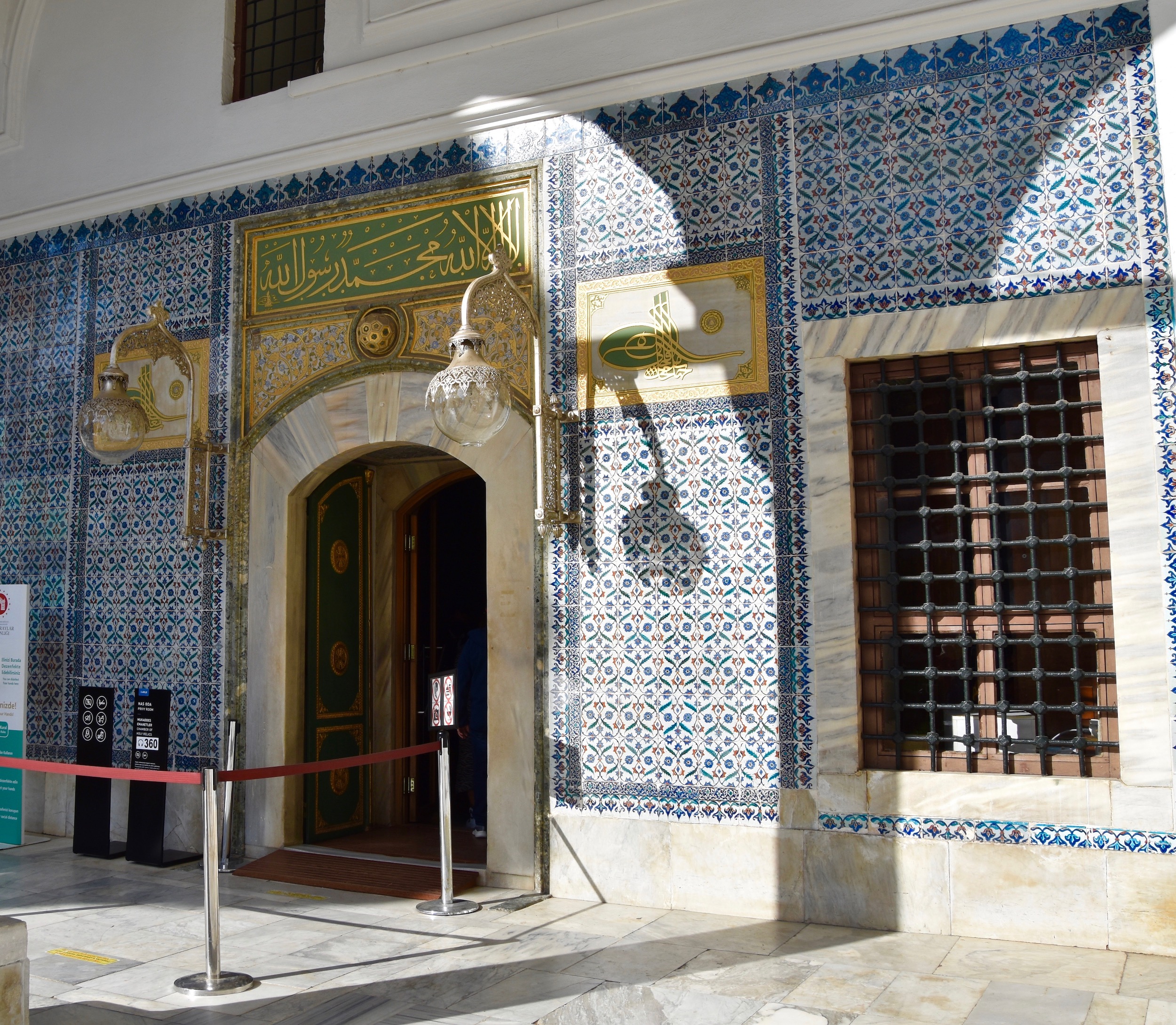
We now advanced in the fourth and final courtyard of the Topkapi Palace. This the entrance to a room which gave me the willies. This is the Circumcision Pavilion where young princes were circumcised as they entered puberty. This is still the custom today and you often see young lads dressed up as princelings in the Sultanahmet on their circumcision day, but they don’t get to have it done in a palace.
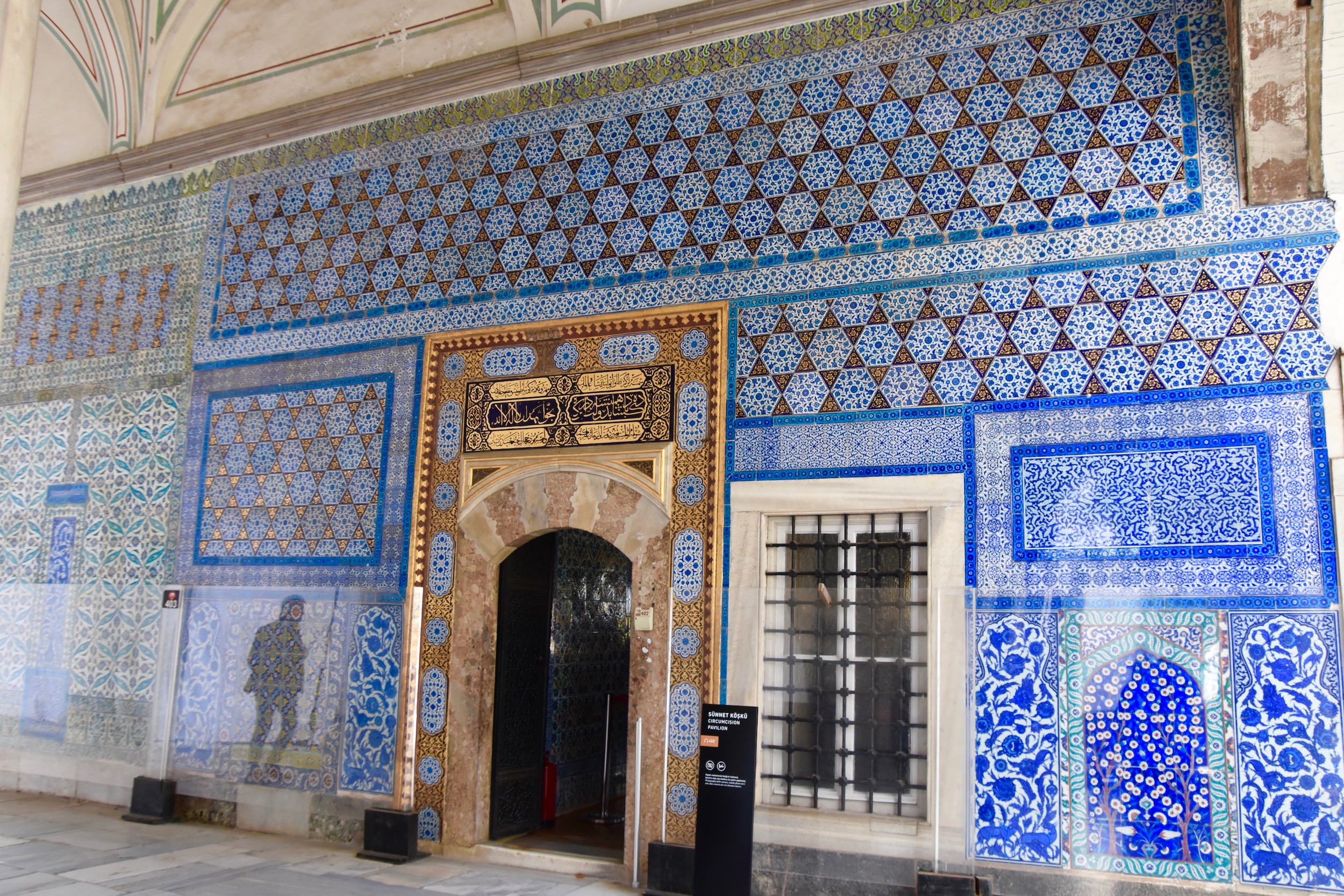
We are now inside the fourth or innermost courtyard of Topkapi Palace where there are a number of pavilions that are also described as kiosks, a word that has a slightly different meaning for westerners. These are commemorative structures usually built after a successful campaign and named for the place that campaign took place. The most interesting of these is the Baghdad Kiosk shown below which was built by Sultan Murad IV after his victories there in 168.
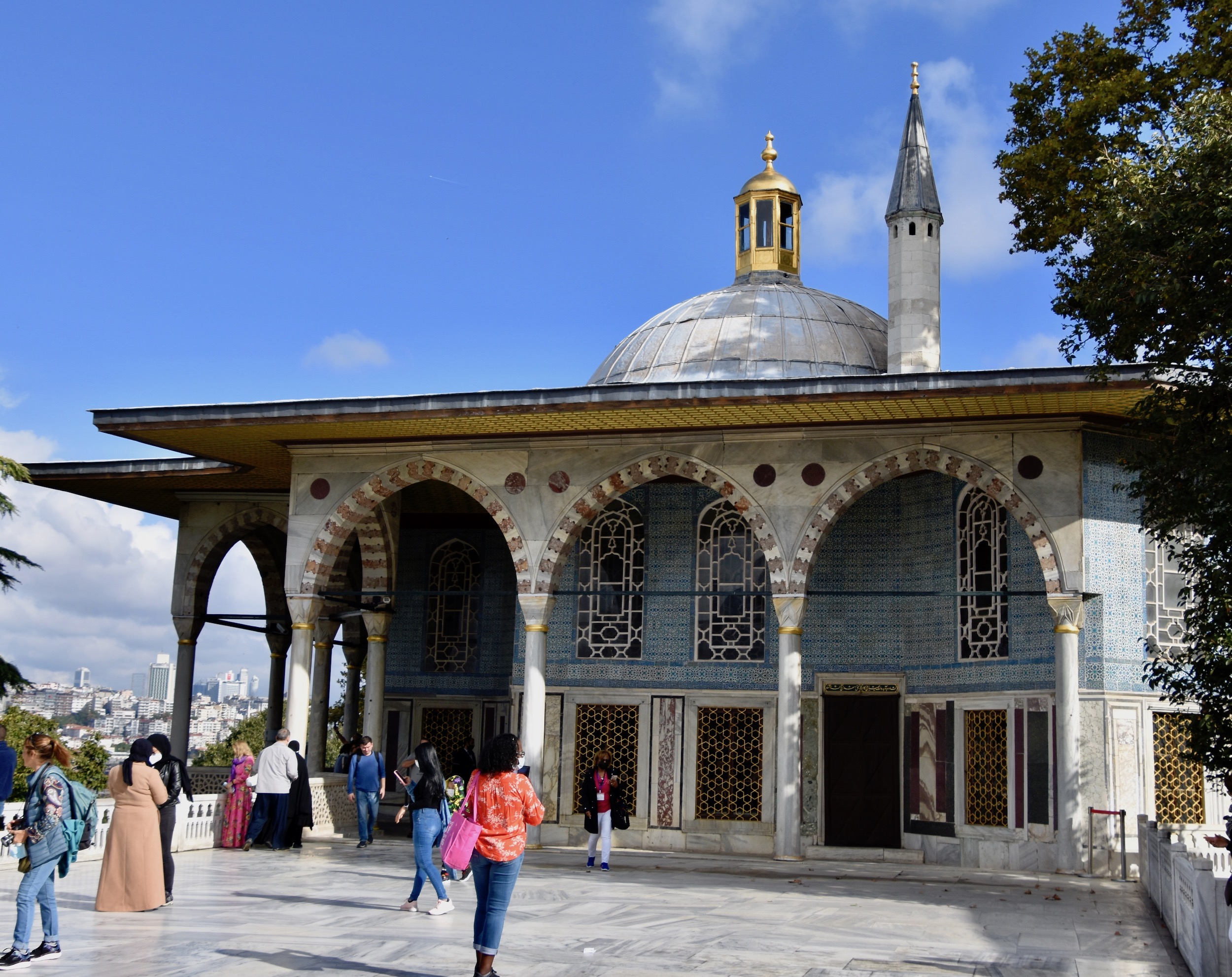
All of these kiosks contain elaborate tile work such as this pattern from the Baghdad kiosk.
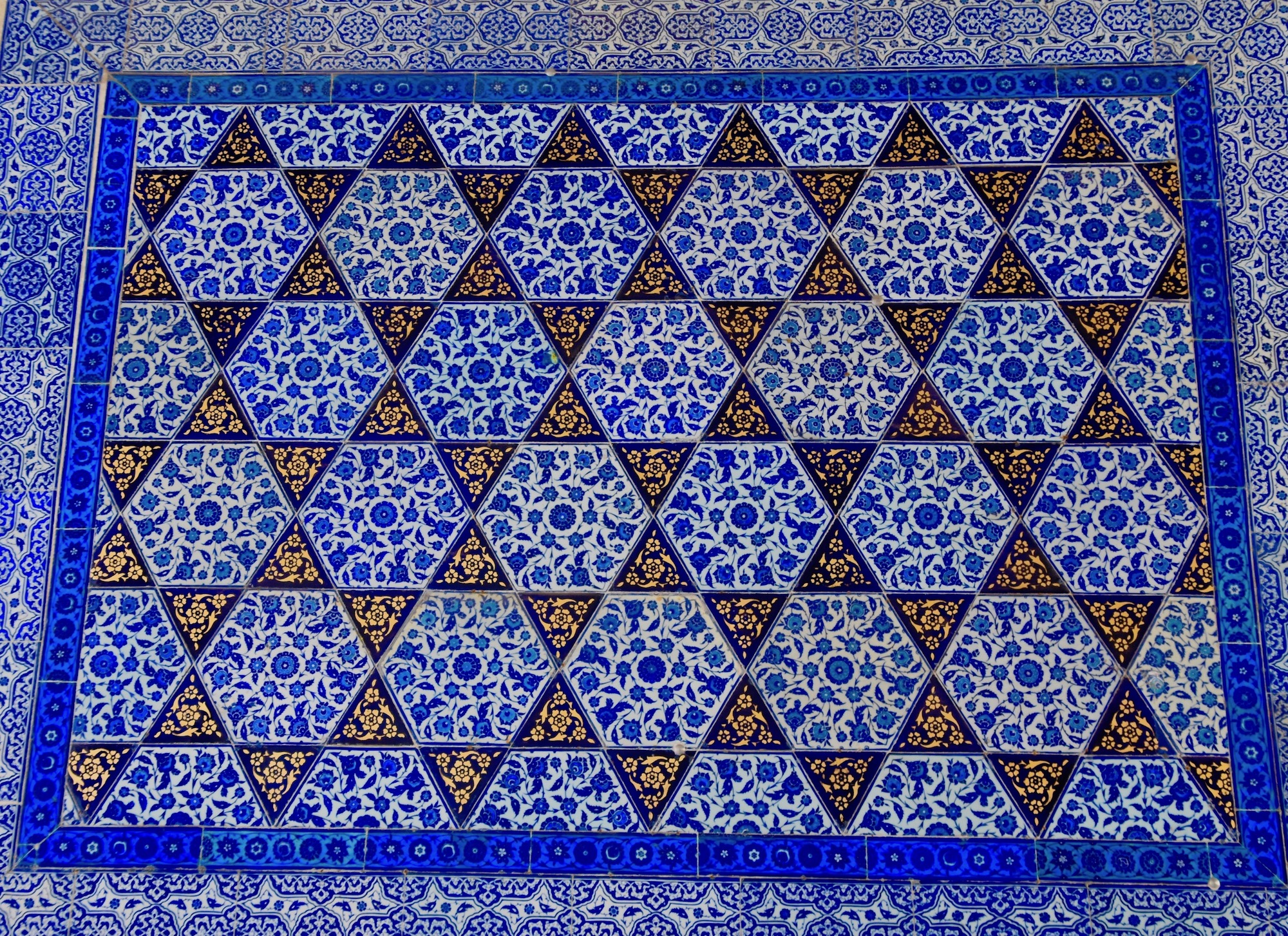
This is where you can also see another Ottoman throne, that of Sultan Mahmud II. It is a 19th century piece made by the French royal furniture maker Charles Lemarchand.
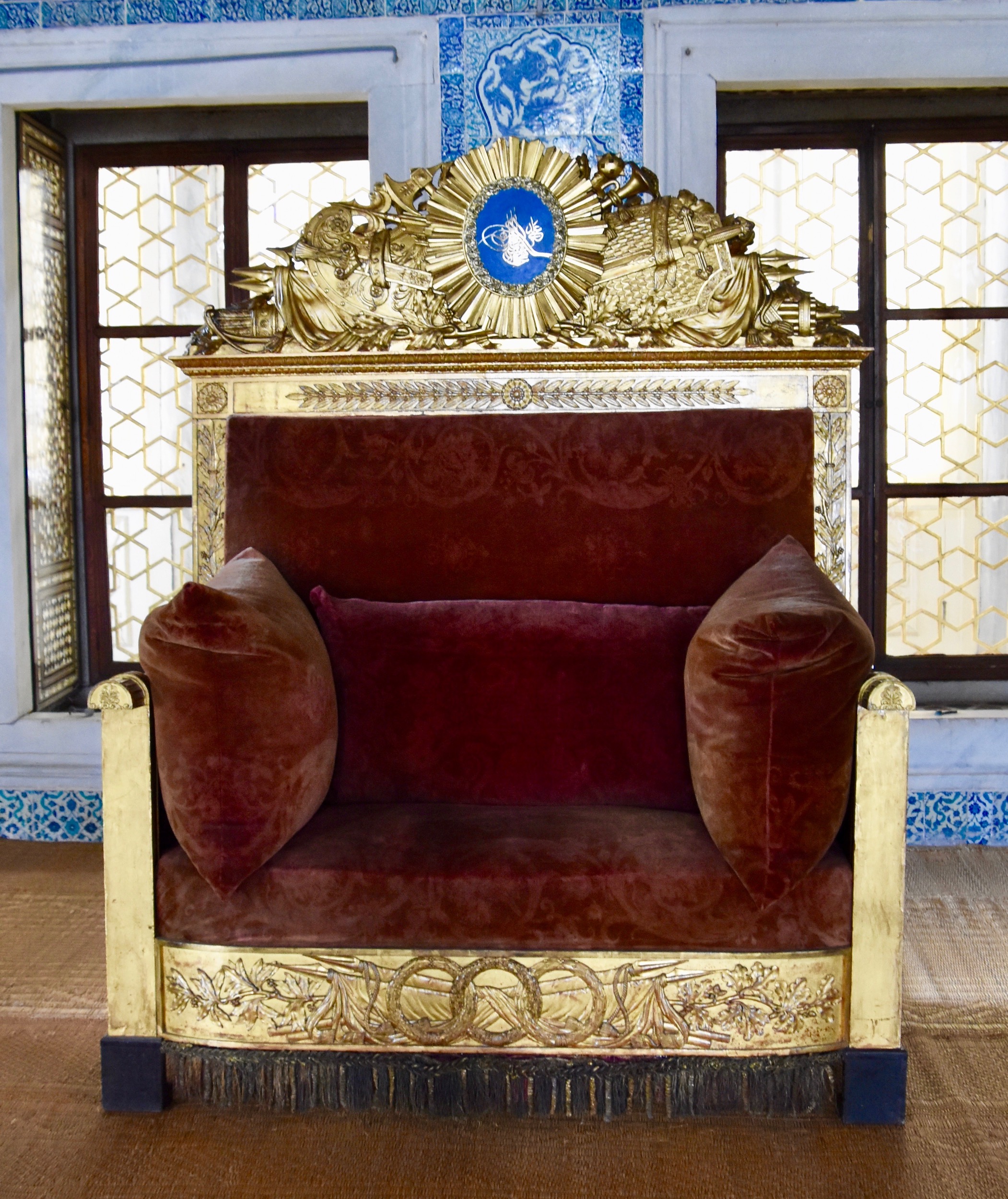
The fourth courtyard terrace offers great views over the Bosphorus to the Asian side of the city.
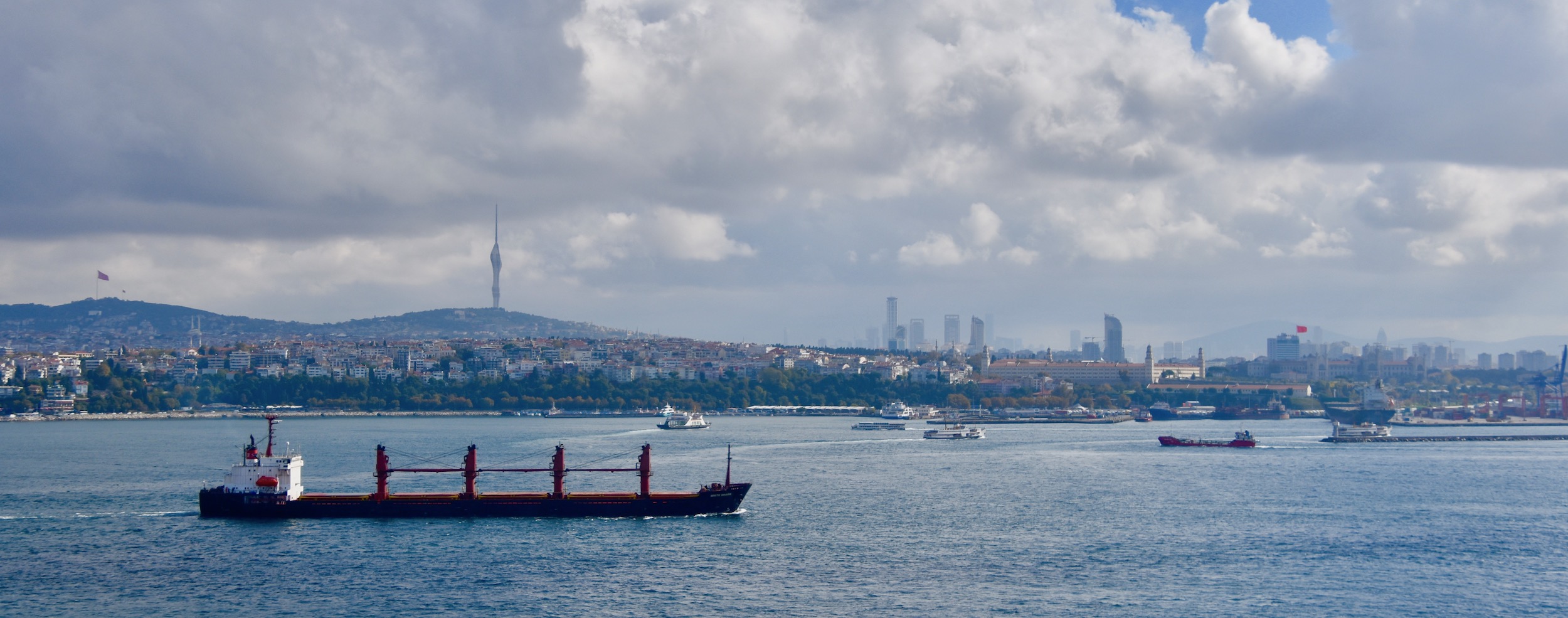
And across the Golden Horn where the Genoan constructed Galata Tower is the most prominent feature. It is part of the Istanbul museums family.
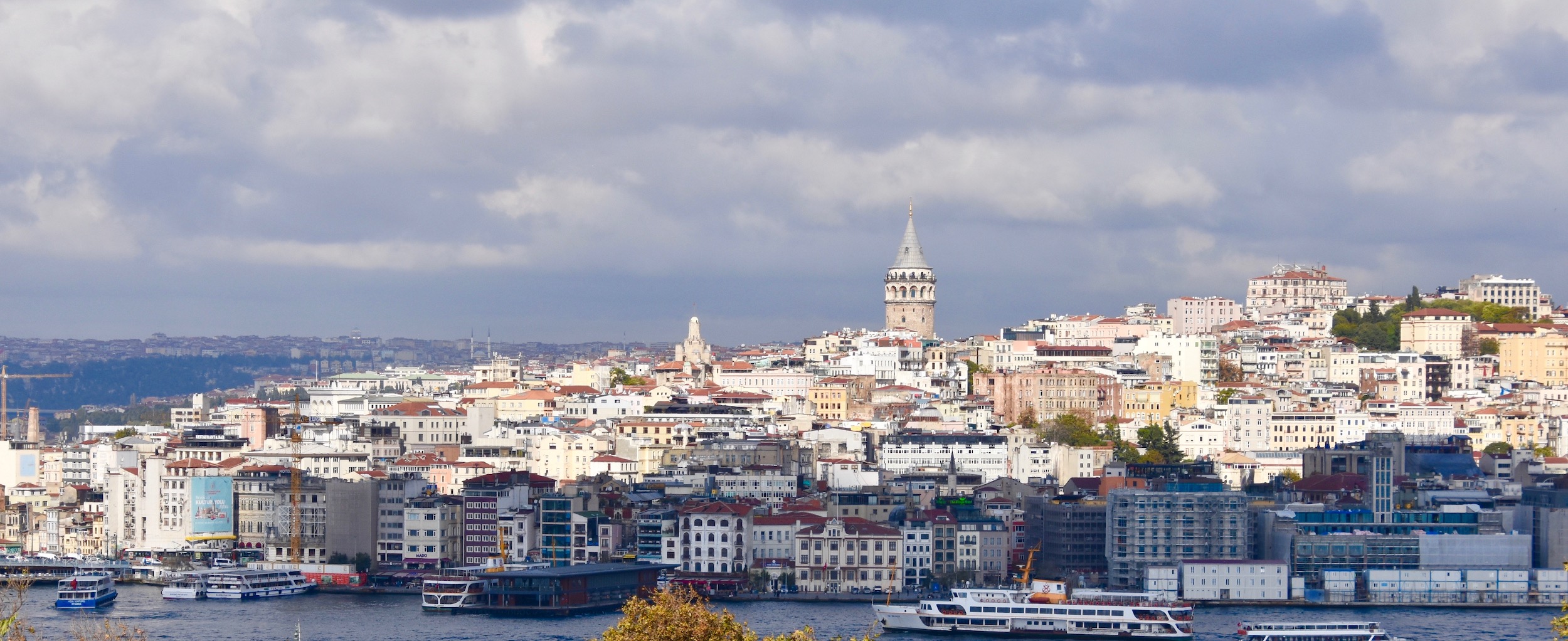
We now begin to make our way back toward the main entrance with one more stop along the way at the Imperial Treasury which houses a collection of rare armour and arms as well as two of the most famous items on display in Topkapi Palace.
The embossing on Ottoman shields raised them to the level of works of art.
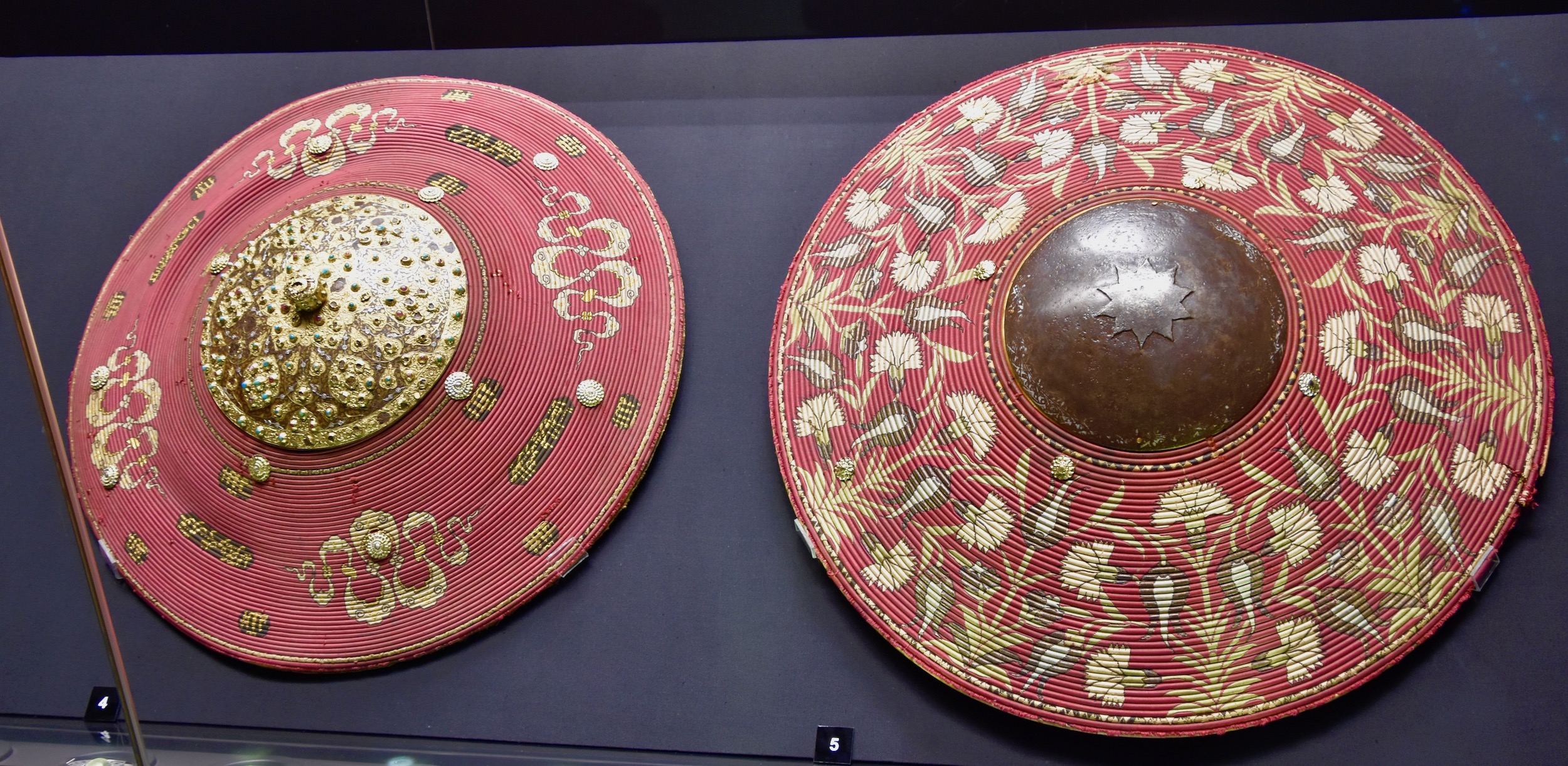
As it did with this brace of pistols.
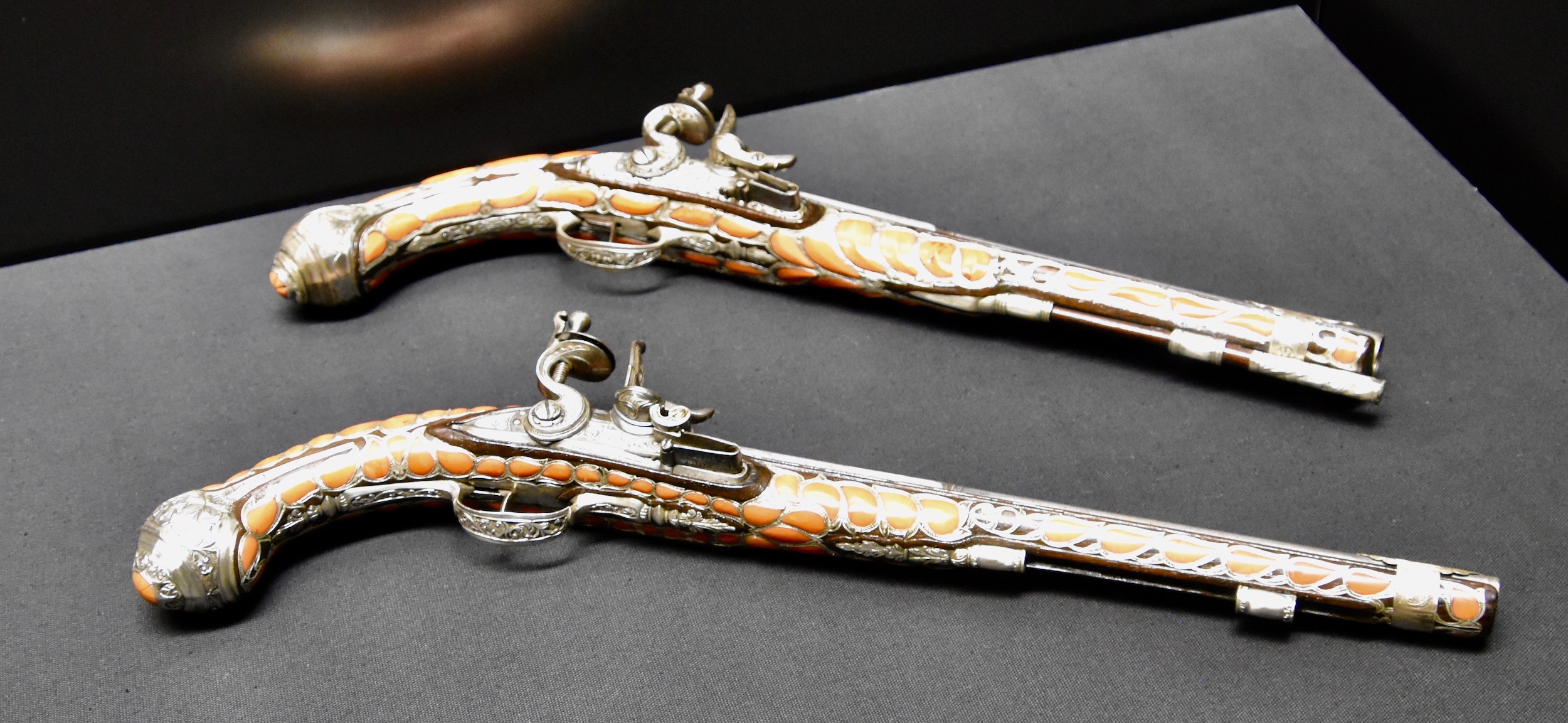
And these muskets.
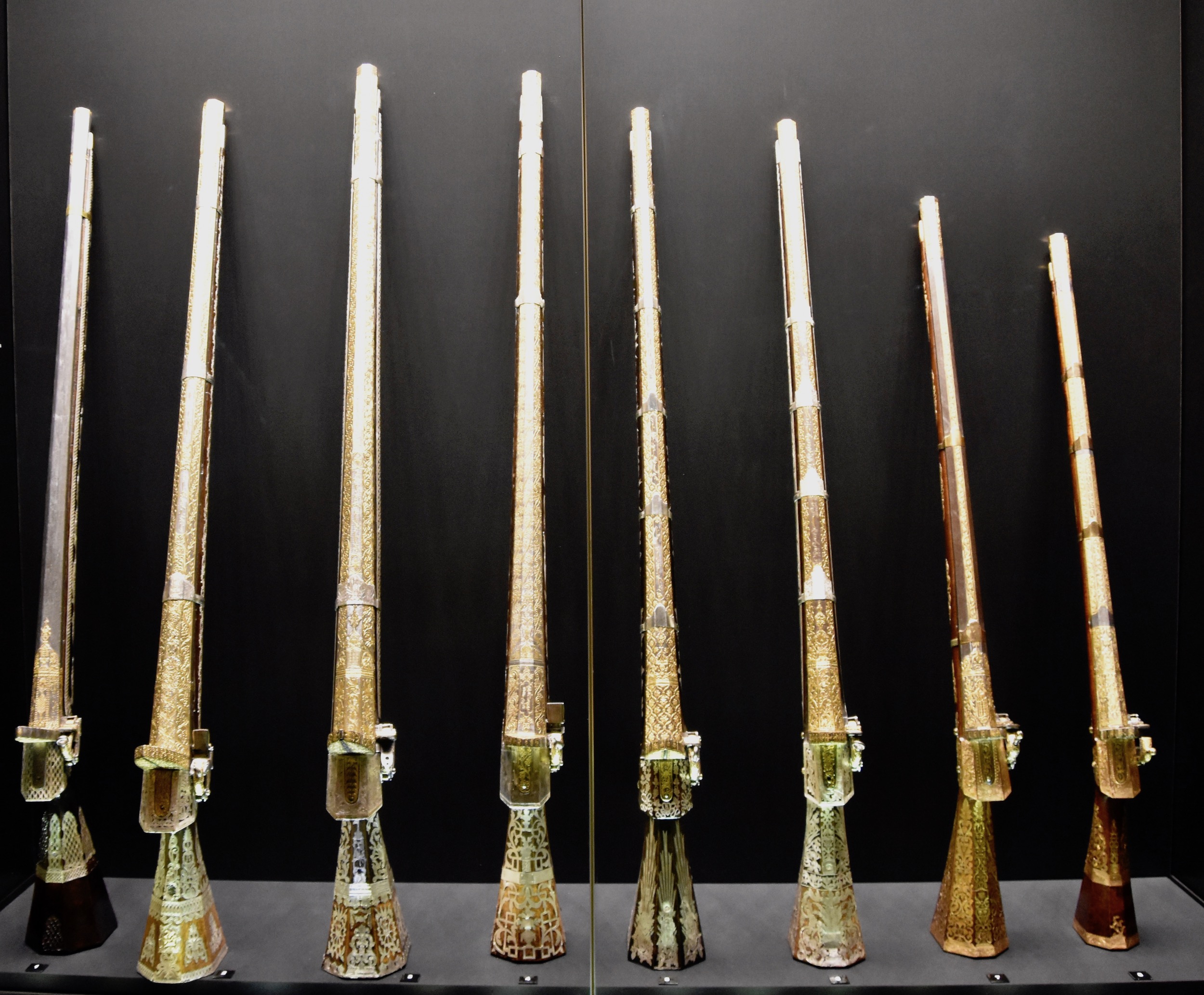
This suit of chain mail belonging to Sultan Mustafa III is really something to behold.
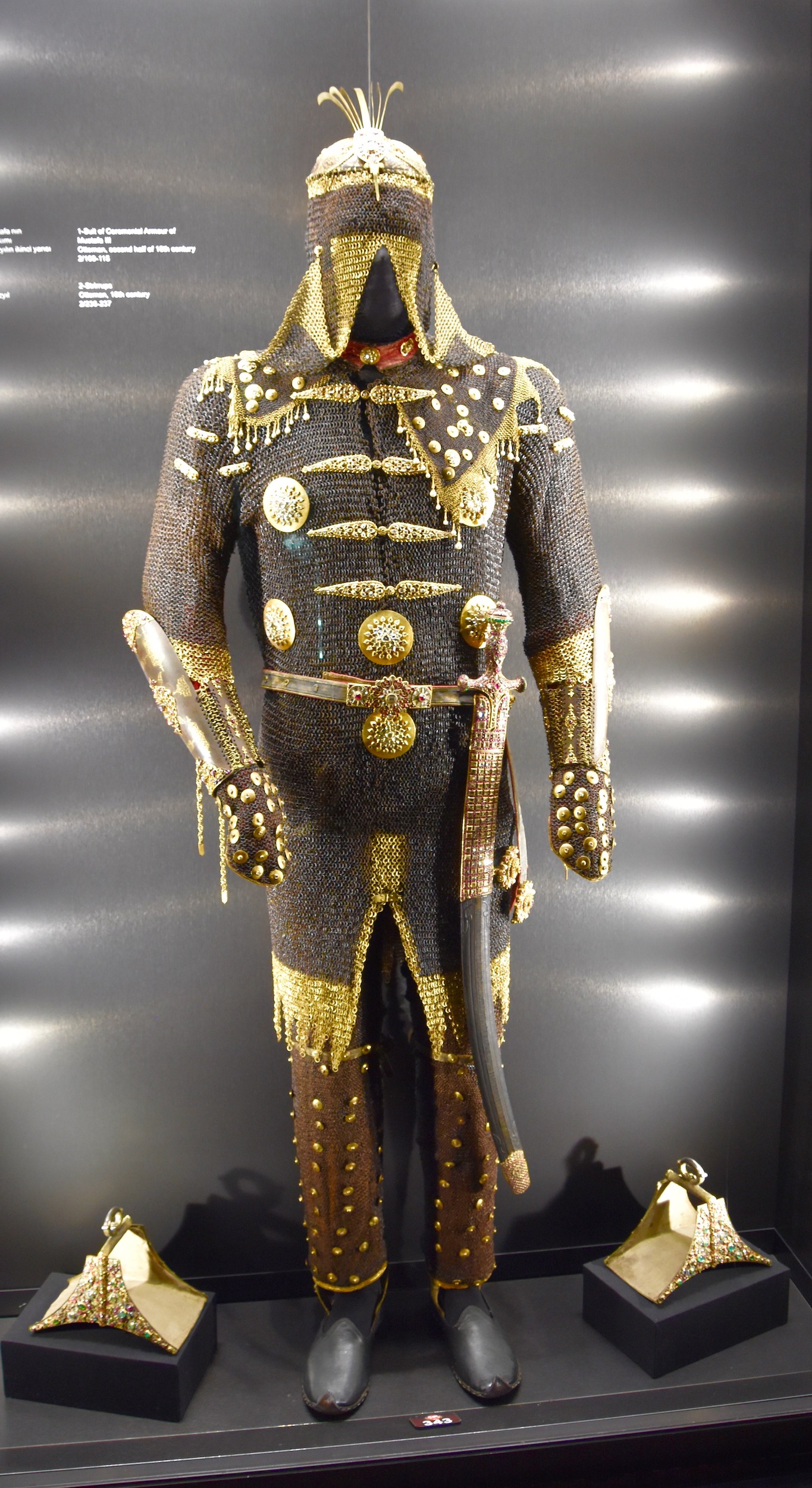
However, I’ve saved the best for last as we enter the second room in the Imperial Treasury. Ever since the proverbial dawn of time, humans have been fascinated by the shiny objects we call ‘precious gems’. Rubies, sapphires, emeralds and above all diamonds, have been coveted by rulers and incorporated into many symbols of power. The Ottomans were no exception. Behold the 86 carat Spoonmaker’s Diamond, the fourth largest of its kind and the single most valuable item on display in the Topkapi Palace – I’m assuming the Sacred Trusts are considered priceless. Follow the link to read it’s disputed provenance.
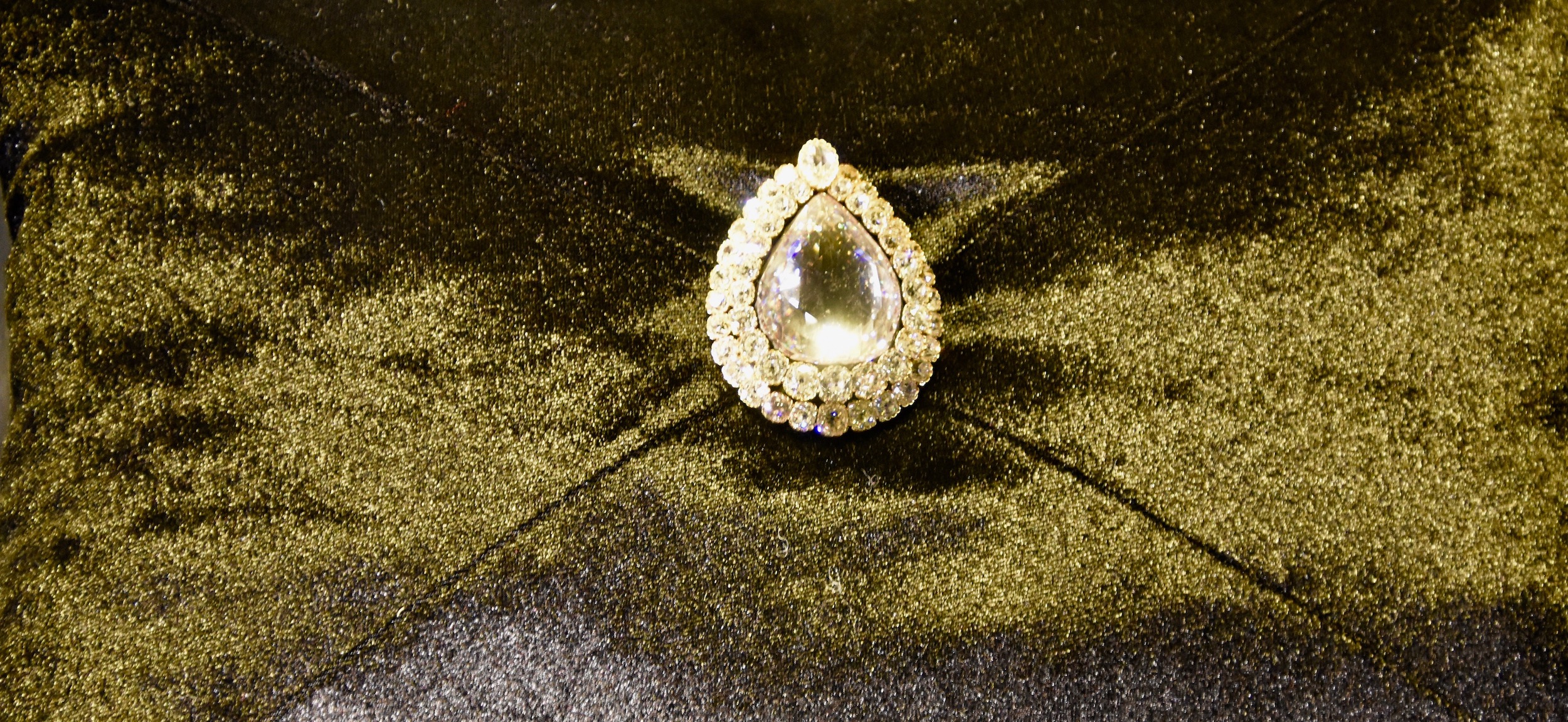
But the thing I really wanted to see was this, the legendary Topkapi Dagger. Its provenance is certain as it was created as a gift from the Sultan Mahmud I to the Shah of Iran whose family returned it after his death. Why you would return such an amazing object is beyond me, but I’m glad they did because I wouldn’t want to have to go to Tehran to see it.
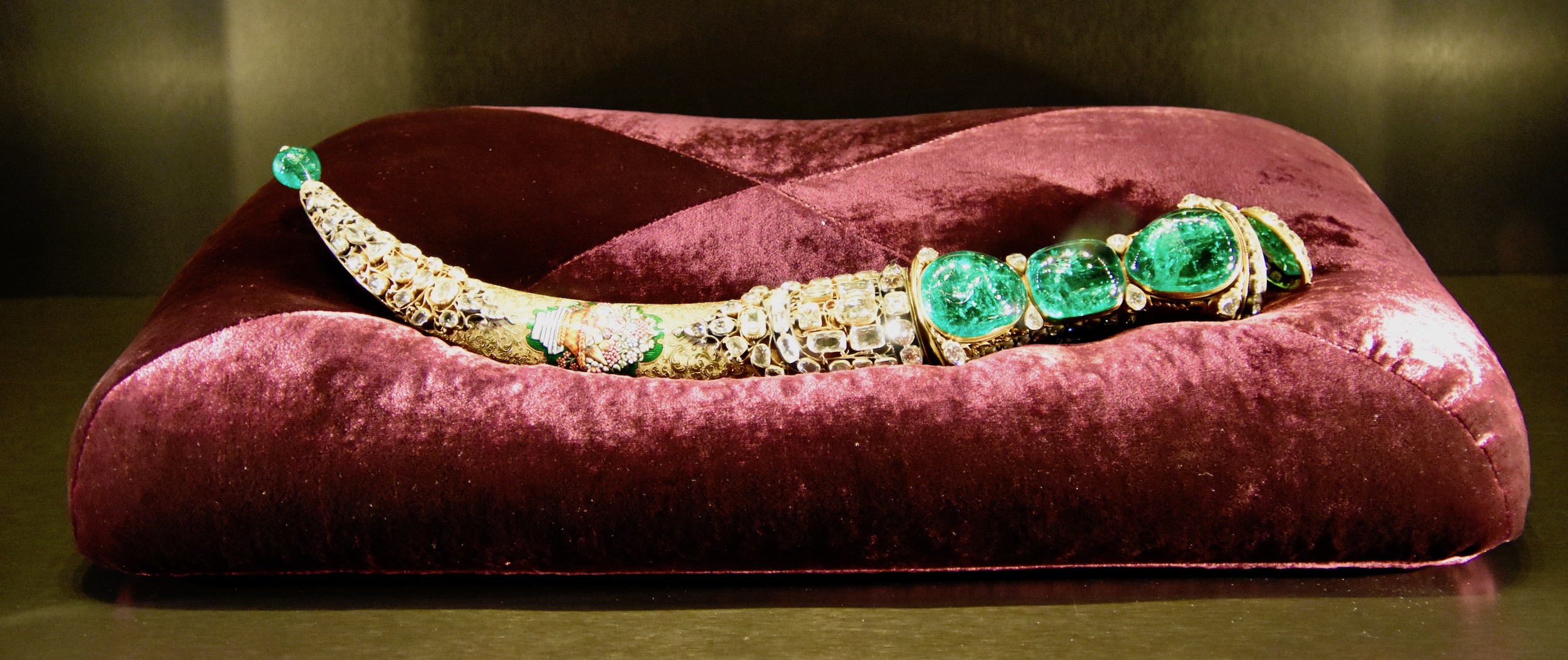
I first became aware of the Topkapi Dagger from the 1964 film Topkapi which featured a terrific cast in a heist movie centred around stealing this very item. It’s a great film well worth seeking out before you make your visit to this place.
That concludes our visit to Topkapi Palace. Note that I did not visit the separate harem complex on this visit. I had seen it previously, but it is definitely worth seeing and is covered by the Istanbul Museum pass I suggested buying.
Sadly we said goodbye to Yasemin Reis our guide who had made this trip to Turkey so special. We had an early flight home and opted to stay at the airport rather than risk Istanbul traffic.
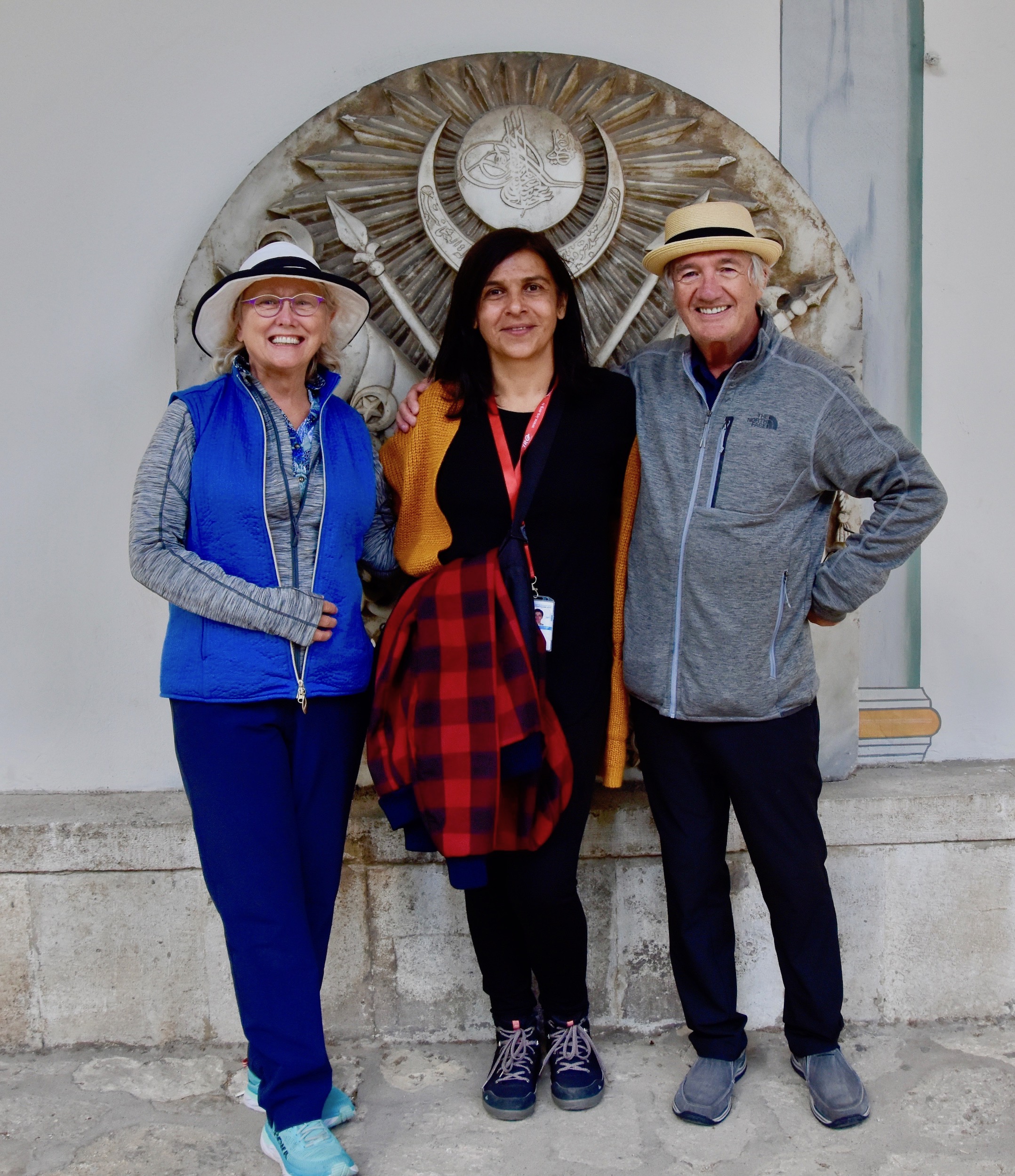
While this concludes this series of posts from Turkey, I am expecting to return in the spring of 2023 with Victor Romagnoli on the Via Egnatia tour which we put together in Malta last year. It starts in Istanbul and visits a number of places in the city not included in the tour we just wrapped up. Maybe I’ll see you there in person.

